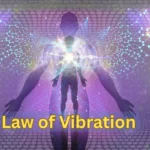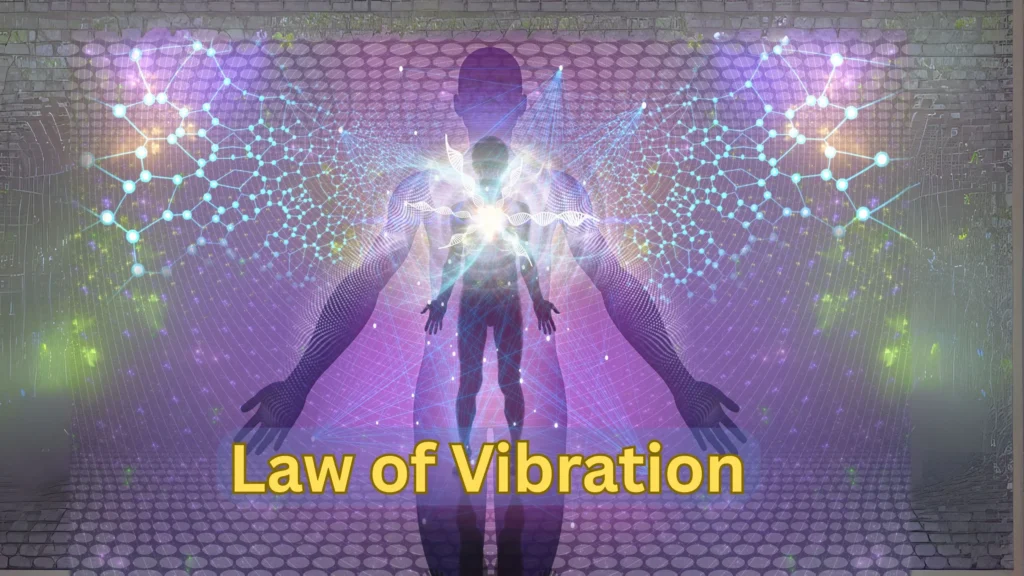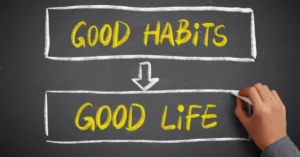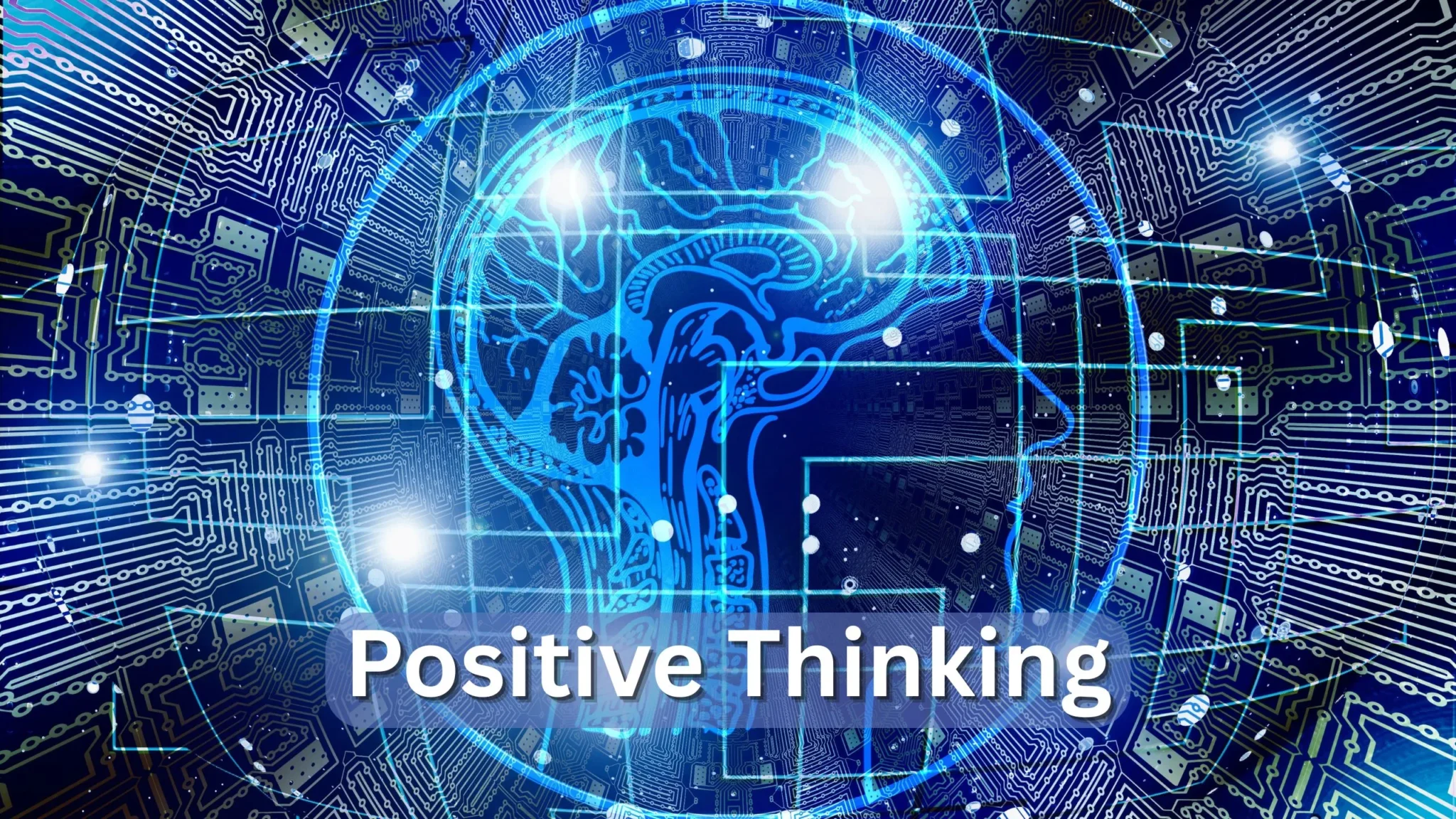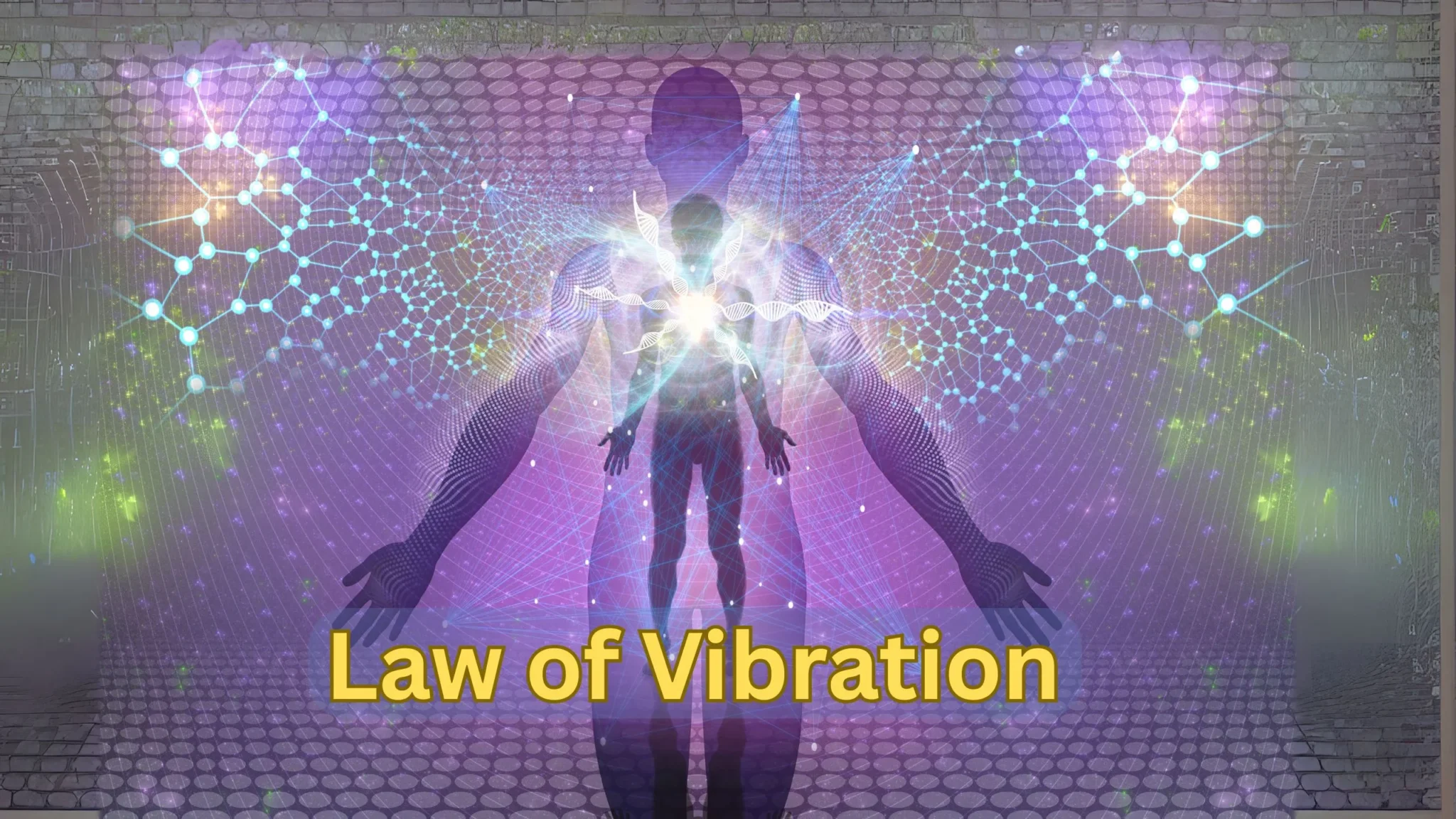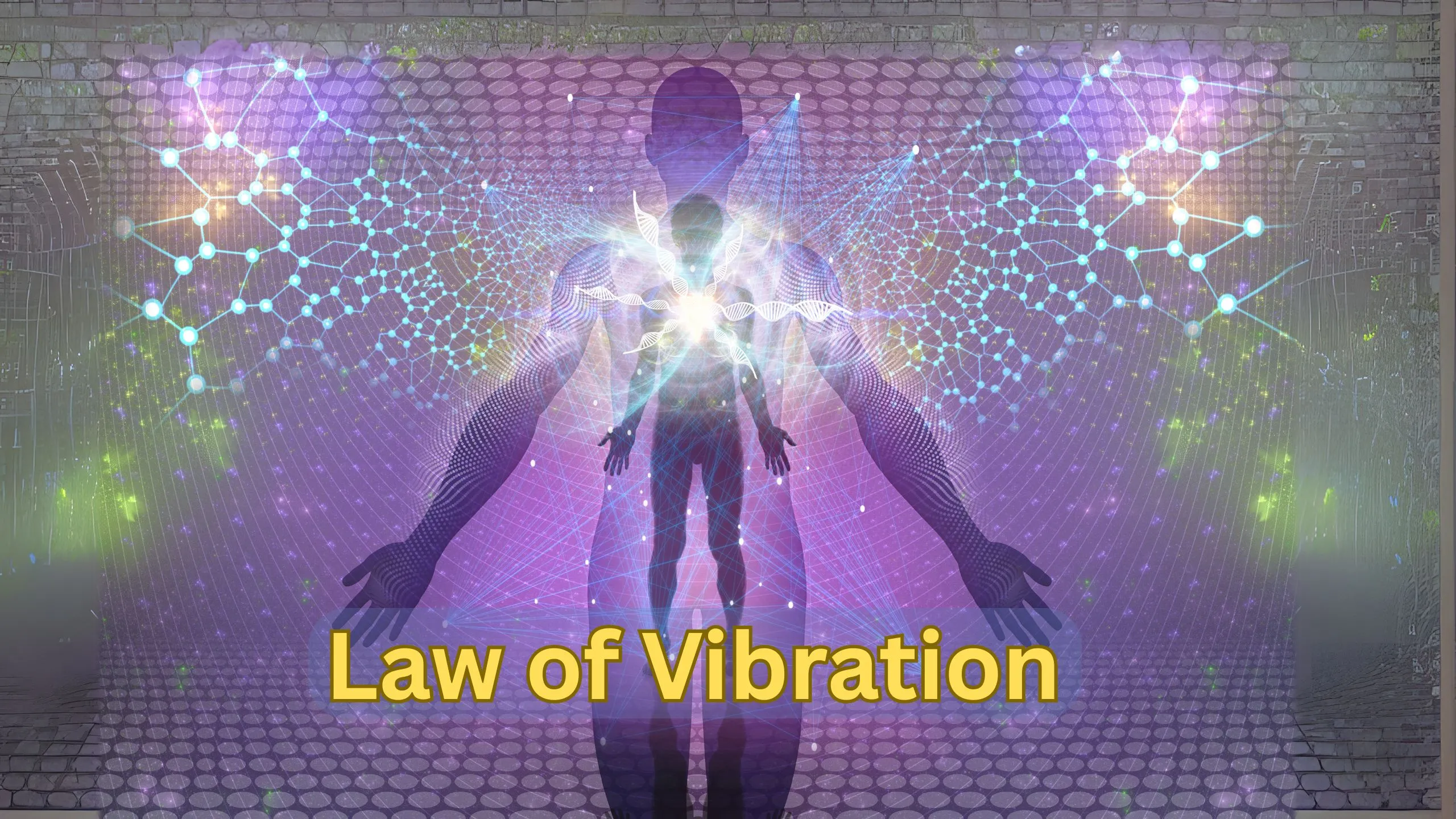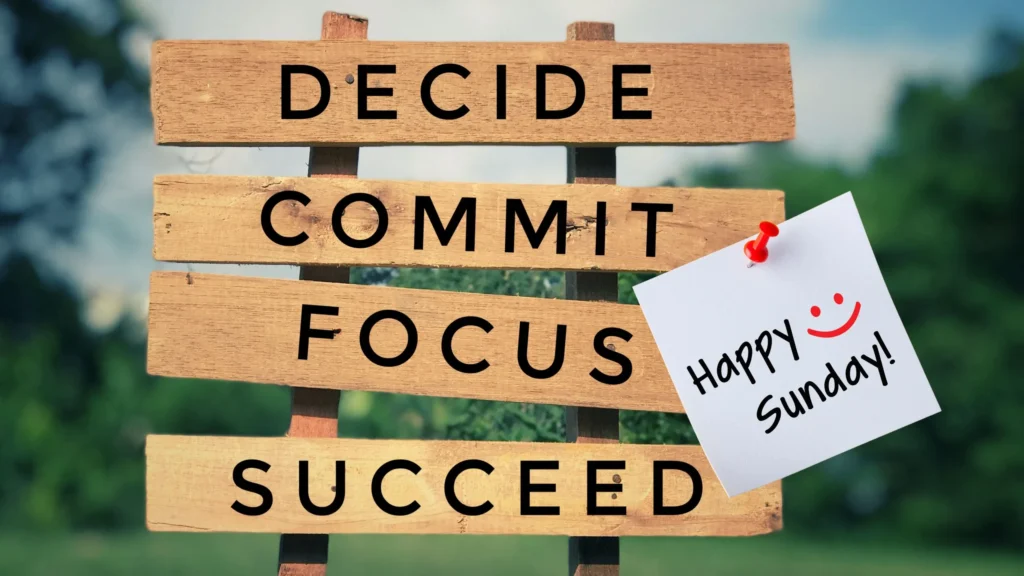
Why Don’t I Dream? 7 Surprising Reasons for not Dreaming at Night
“Sleep is the golden chain that ties health and our bodies together.” – Thomas Dekker
Introduction
Have you ever woken up in the morning and asked yourself, “Why don‘t I dream anymore?” You’re not alone. Millions of people across the U.S. experience dreamless sleep, leaving them puzzled and even concerned. People seek reasons for not dreaming at night. According to the American Academy of Sleep Medicine, REM sleep isn’t where most dreaming occurs; it typically makes up about 20-25% of total sleep time. If you’re not remembering any dreams, you might wonder if you’re even entering this vital stage.
In this article, we’ll explore the 7 surprising reasons for not dreaming at night, combining insights from sleep science, psychology, and lifestyle factors. Our goal is to demystify why you might be experiencing this and what can be done about it.
Key Takeaway: Most of us do dream, but we don’t always remember them. The reasons behind that can be more common and correctable than we think.
What Is Dreaming and Why Does It Matter?
Dreams are sequences of images, thoughts, and emotions that occur during sleep, especially in the REM (Rapid Eye Movement) phase. They’re not just random brain activity instead, they play a role in emotional processing, memory consolidation, and stress regulation.
We often associate dreaming with vivid storytelling at night, but if you’re experiencing no dreams at night, it doesn’t necessarily mean your brain isn’t active. Instead, it may mean you’re simply not recalling them.
Related: Black Snake in the Dream – 8 Interpretations That May Be A Warning For You
Sleep Stages and Dream Likelihood
| Sleep Stage | Description | Dreaming Likelihood |
|---|---|---|
| NREM Stage 1 | Light sleep | Very low |
| NREM Stage 2 | Onset of sleep | Low |
| NREM Stage 3 | Deep sleep | Moderate |
| REM Sleep | Active dreaming | Very high |
Related: 7 Dream Interpreter AI: Unlocking the Secrets of Your Dreams with Technology
7 Surprising Reasons for Not Dreaming at Night
1. You Are Dreaming But Forgetting Them
Let’s start with the most common reason: we do dream, but we fail to recall them. Our ability to remember dreams is tied to how and when we wake up.
- Waking during or right after REM makes it easier to remember.
- Alarms can disrupt recall.
- Lack of mental focus upon waking leads to memory loss.

Tip: Keep a dream journal near your bed. Writing within minutes of waking boosts dream memory.
“We remember dreams the same way we remember anything like attention, emotion, and repetition that matter.”
Related: Mastering A-Z of Dream Journaling in 10 Minutes to Unlock Your Inner Strength
2. Poor Sleep Quality or Disrupted Sleep Cycles
One of the primary reasons for not dreaming at night is inconsistent or poor-quality sleep. If we aren’t cycling naturally through all sleep stages, especially REM, dreams won’t occur or get disrupted.
- Sleep apnea, insomnia, and restless leg syndrome can reduce REM time
- Nighttime interruptions reset the sleep cycle prematurely
How this affects dreaming: Shortened or skipped REM stages mean fewer dreams.
Related: Causes of Nightmares: Why We Have Bad Dreams and What They Reveal in 5 Minutes
3. High Stress or Chronic Anxiety
We might think stress would trigger more dreams, but chronic stress often blocks deep sleep, leading to dreaming problems.
- High cortisol levels delay REM onset
- Anxiety creates fragmented sleep
Clinical Insight: Those under long-term stress often experience dreamless sleep or dreams they can’t remember due to interrupted sleep architecture.

Related: 6 Effective Stress-Relief Techniques for Lasting Peace
4. Medication or Substance Use
Certain drugs suppress REM sleep, which directly causes no dreams at night.
- Antidepressants (especially SSRIs and SNRIs)
- Alcohol and recreational substances
- Sleep aids and antihistamines
Pro Tip: Talk to a healthcare provider if you suspect medications are affecting your dreams. Never stop prescriptions abruptly.
Related: Music Therapy for Depression: How Sound Heals the Mind in 5 Unique Ways
5. Mental Health Factors
Mental health and sleep, and dreams are closely connected. People dealing with depression, PTSD, or other conditions may experience less vivid or fragmented dreams.
- PTSD sufferers often have night terrors but may forget peaceful dreams
- Depression slows brain activity during REM
Therapeutic Note: Working with a therapist on trauma can improve dream recall and sleep quality.
Related: 6 Brilliant Sleep Meditation Tips for a Restful Mind
6. Brain Chemistry & Neurobiology

Some of us naturally have lower dream recall abilities due to how our brains function.
- Lower activity in the temporoparietal junction can impair dream recall
- Genetics may play a role in your dream frequency
If this sounds like you, you’re not broken, you’re just different.
Related: Yoga for Brain: Boost Memory & Focus Naturally in 30 Minutes Daily
7. Undiagnosed Sleep Disorders
The last but critical reason could be a medical issue. Disorders like narcolepsy, REM sleep behavior disorder, or chronic insomnia affect how and when we dream.
If you\u2019ve gone weeks or months without recalling a dream and experience extreme daytime fatigue, speak with a sleep specialist.
Related: 8 Unbelievable Benefits of Good Sleep That Prevent Aging
Is It Bad If We Don’t Dream?
Not necessarily. But if you’re never dreaming or frequently tired, it may signal that you’re not reaching restorative REM stages.
What it could mean:

- Sleep deprivation
- Underlying neurological issues
- Emotional detachment
Dreams may be the brain’s way of healing and sorting information. Missing them could reduce emotional and cognitive resilience. — Sleep Research Society
Related: 10 Dangerous Mistakes That Harm Emotional Well-being
How Can We Start Remembering Our Dreams Again?
Here are some practical strategies:
Dream Recall Boosters
- Go to bed and wake up at consistent times
- Avoid alcohol and caffeine at night
- Set intentions: Tell yourself you’ll remember your dreams
- Use a dream journal
- Try lucid dreaming techniques
Related: What is Lucid Dreaming? A Complete Guide to Unlock Your Dream World
Lifestyle Adjustments
- Practice mindfulness and meditation
- Avoid blue light before bed
- Limit screen time an hour before sleep

Related: 8 Ancient Meditation Mudras That Erase Negativity & Elevate Focus
Clinical Options
- Cognitive Behavioral Therapy for Insomnia (CBT-I)
- Sleep study to rule out disorders
- Adjust medications under guidance
Related: Guided vs Unguided Meditation: Which Strategy Is Right for You?
Conclusion
Dreaming is a fascinating and essential part of our sleep cycle, and when we stop recalling our dreams, it can feel like something we’re missing. Whether it’s due to stress, medication, poor sleep, or undiagnosed conditions, the good news is that most reasons for not dreaming at night are reversible or manageable.
As we’ve seen, understanding the link between sleep and dreams can help us reconnect with this subconscious experience. By improving our sleep hygiene, reducing stress, and being mindful, we can rediscover the mysterious world of dreams.
If you’re still unsure or worried about no dreams at night, consulting a sleep specialist might be the best next step.
FAQs
1. Is it normal not to dream at all?
Yes, it’s common to forget dreams, even if you experience them every night.
2. Can anxiety stop me from dreaming?
Chronic anxiety disrupts sleep cycles, making it harder to enter deep REM stages where dreams occur.
3. Do sleep medications affect dreams?
Many do. They can suppress REM sleep, reducing the frequency and vividness of dreams.
4. Does everyone dream every night?
Almost everyone dreams multiple times a night, but not everyone remembers them.
5. Can you train yourself to dream more?
Yes, with good sleep hygiene and dream journaling, you can improve dream recall and even start lucid dreaming.
The Power of Positive Thinking: How to Rewire Your Mind for Success & Happiness in 5 Minutes
“Change your thoughts and you change your world.” – Norman Vincent Peale
Introduction
The power of positive thinking can change how we live, feel, and succeed. It’s more than wishful thinking—it’s a proven mindset shift that shapes our emotional and physical well-being. In a world filled with stress, negative news, and daily pressures, staying positive isn’t always easy. But here’s the truth: how we think influences how we act. And when we choose to think positively, we boost confidence, reduce stress, and increase our chances of success. Studies show that people with a positive mindset are 31% more productive, 40% more likely to receive a promotion, and live up to 10 years longer.
In this article, we’ll explore the power of positive thinking, how it transforms our lives, and how you can tap into it in just five minutes a day. Whether you want to improve mental health, feel more energized, or invite success into your life, positive thinking can be your starting point.
Read More: Embracing Change: 6 Inspiring Steps to Build a Growth Mindset
What Is Positive Thinking?
Positive thinking is more than just ignoring life’s problems or wearing a fake smile. It’s a mental and emotional attitude that focuses on the good, anticipates happiness, health, and success, and trains the mind to overcome negativity.
We’re not talking about sugarcoating reality. Instead, we reframe our thoughts, shift our perspective, and train our brain to find opportunities, even in tough situations.
“Positive thinking doesn’t mean you ignore life’s stressors—it means you approach them with the belief that you can overcome them.”
Read More: The Science of Happiness: What Exactly Boosts Your Mood in 2 Minutes?
The Science Behind the Power of Positive Thinking
How It Works in the Brain
When we think positively, our brain releases dopamine and serotonin—neurotransmitters that elevate mood and reduce stress. Over time, these thought patterns rewire neural pathways, creating long-lasting changes in behavior and mental health.
Research That Supports Positive Thinking
- The Mayo Clinic links positive thinking to lower depression rates, reduced risk of cardiovascular disease, and increased life span.
- Barbara Fredrickson’s “Broaden-and-Build” theory suggests that positive emotions expand our thinking and open us up to new possibilities.
Related: 10 Early Warning Signs of Depression That Are Hard to Miss
Life-Changing Benefits of Positive Thinking
🧠 Mental Health Boost
The power of positive thinking can dramatically improve our mental health. A healthy mind truly begins with healthy, constructive thinking habits.
- When we maintain a positive mindset, we’re more likely to experience lower levels of anxiety, depression, and emotional distress.
- Scientific research shows that focusing on positive thoughts can rewire the brain, creating new neural connections that support optimism, resilience, and emotional regulation.
- Positive self-talk and optimistic outlooks reduce the impact of negative events, helping us stay grounded and mentally strong.
- Instead of spiraling into stress or panic, we learn how to think positively, which allows for better problem-solving and emotional balance.

Related: 7 Astonishing Techniques for Discovering Self-empowerment and Thriving
- The benefits of positive thinking extend to improved sleep quality, enhanced cognitive flexibility, and higher overall life satisfaction.
- Embracing a positive mindset empowers us to see challenges as growth opportunities rather than threats. It doesn’t mean denying hardships; it means building the mental muscle to face them with confidence.
- When practiced consistently, the power of positive thinking becomes a powerful protective factor against many common psychological conditions.
- As we choose success and positivity over self-doubt, we begin to transform our inner narrative and ultimately our mental wellness.
Related: The Power of Self-Discipline: 5 Techniques to Master It
❤️ Physical Health Benefits
Positive thinking doesn’t just make us feel better emotionally—it can also significantly improve our physical health. By incorporating positive thinking into our daily routine, we empower both our mind and body to perform at their best.
- People with a positive mindset have lower rates of heart disease, better immune function, and even longer life expectancy.
- When we engage in positive thinking, our bodies respond by decreasing stress hormones like cortisol and increasing “feel-good” chemicals such as dopamine and serotonin. This shift helps lower blood pressure, reduce chronic inflammation, and enhance overall vitality.
Related: 6 Surprising Ways Self-Care Therapy Heals Negativity
- The power of positive thinking can also contribute to better pain management, faster healing, and healthier lifestyle choices.
- People who practice positive thinking are more likely to engage in exercise, eat well, and avoid harmful behaviors such as smoking.
- Embracing success and positivity helps us prioritize self-care, make mindful choices, and sustain long-term wellness.
Read Also: 10 Best Self-Soothing Techniques for Effortless Emotional Control
🧘♀️ Better Stress Management
- One of the most immediate and powerful benefits of positive thinking is its ability to reduce stress. Stress, when left unchecked, can wreak havoc on our physical and mental well-being. But with positive thinking, our response to daily challenges changes.
- Instead of reacting with fear or frustration, we approach problems with a calm and solution-oriented mindset.
Related: 7 Inspiring Secrets About How to Overcome The Fear of Failure
- The power of positive thinking acts as a buffer, protecting us from the overwhelming effects of chronic tension.
- With regular effort, we train our minds to find peace in the present and reduce unnecessary overthinking. Ultimately, better stress management improves heart health, strengthens immunity, and promotes positive decision-making.
- When we choose success and positivity over stress, we reclaim control over our emotional responses. A positive mindset becomes not just a coping tool, but a strong preventive strategy.

Related: 7 Powerful Steps to Fostering Self-Forgiveness and Inner Peace
💼 Career & Decision-Making Enhancement
- The power of positive thinking can be a game-changer in our professional lives. When we cultivate a positive mindset, we don’t just feel better—we perform better.
- Optimistic individuals tend to set higher goals, stay motivated, and push through obstacles. This approach naturally leads to more success and positivity in the workplace.
- Positive thinkers are also better decision-makers because they evaluate situations with clarity, confidence, and creativity. They’re more likely to seek solutions rather than focus on problems, which improves leadership, teamwork, and productivity.
Read More: How to Build Confidence? 5 Key Secrets to Eliminate Insecurities
- The benefits of positive thinking also include better communication and stronger workplace relationships.
- Focusing on possibilities rather than limitations, we become more innovative and open to feedback. Managers and team members with positive thinking skills tend to foster healthier work environments, improving morale and reducing burnout.
- Furthermore, positive professionals are often seen as more trustworthy and dependable, which opens up more career advancement opportunities.
- When we train our minds to think positively, we create the mental conditions necessary for high performance, adaptability, and job satisfaction.

Read More: Pessimism vs Optimism – 5 Interesting Hidden Facts You Can’t Ignore
👫 Strengthens Relationships
- Relationships flourish when nurtured with kindness, empathy, and understanding—all amplified through positive thinking.
- When we adopt a positive mindset, we’re more likely to approach interactions with patience, compassion, and appreciation.
- The power of positive thinking helps us view others through a lens of goodwill, making it easier to forgive, compromise, and connect. This reduces conflict, strengthens emotional bonds, and builds long-lasting trust.
Related: How to Foster Empathy: 8 Effective Ways to Build Compassion and Connection
- Studies show that people practicing positive thinking tend to experience more satisfying personal and social relationships.
- Positive thinking in relationships reduces assumptions and negative self-talk.
- When we feel good within, we project that same energy outward. Our emotional well-being directly affects how we treat others, and a positive mindset encourages empathy and mutual respect.
- A positive mindset empowers us to love better, listen deeper, and build more meaningful human connections. Whether friendship, family, or partnerships, a positive approach makes relationships thrive.
Read More: 10 Simple Yet Effective Activities to Strengthen Family Bonds
How to Practice Positive Thinking Daily
Let’s get to the heart of it: how can we actually rewire our minds in just 5 minutes a day?
1. Start with Affirmations
Spend the first minute in front of a mirror. Say statements like:
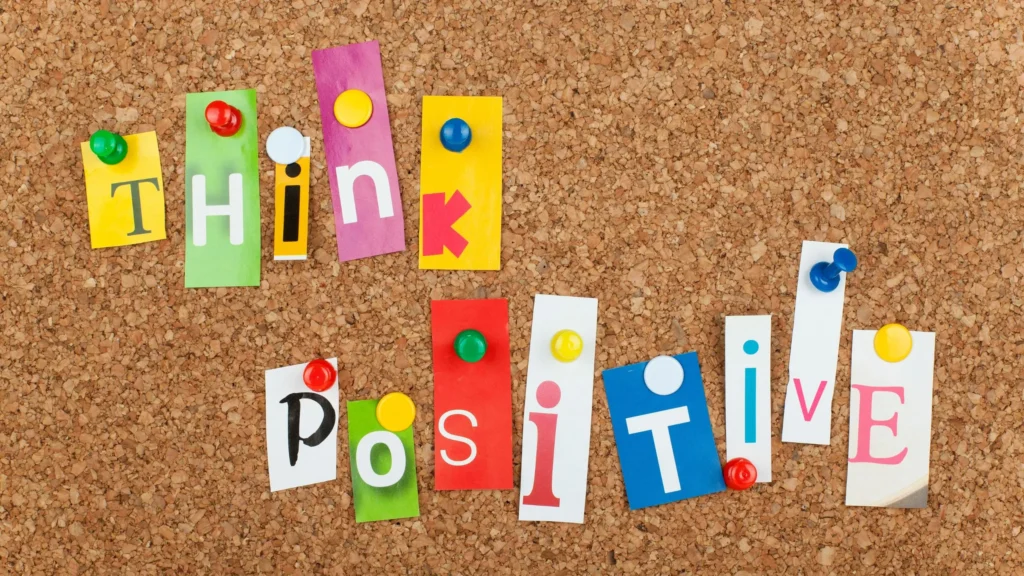
- “I am capable and strong.”
- “I create opportunities through my thoughts.”
Related: 10 Powerful Affirmations for Daily Manifestation: Unlock an Abundant Life
2. Write in a Gratitude Journal
List 3 things you’re grateful for. It shifts your focus from what’s lacking to what’s thriving.
Related: 6 Heartwarming Tips on How to Express Gratitude to Others
3. Visualize a Positive Outcome
Close your eyes and picture your success—whether it’s acing a meeting or having a peaceful day.
Related: How to Use Visualization Techniques for Manifestation: 6 Brilliant Strategies
4. Reframe One Negative Thought
Take a negative belief and flip it. Instead of “I’m not good enough,” say “I’m learning and growing every day.”

Related: Negative Self-Talk: What It Is, Why It Happens, and 6 Ways to Stop It for Good
5. Practice Mindful Breathing
Just breathe. Inhale for four seconds, hold, then exhale. Calm mind, calm body.
Related: 5 Quick and Effective Breathing Techniques to Reduce Stress Instantly
Positive Thinking vs. Toxic Positivity
Acknowledging that not every emotion needs to be “fixed” instantly is important. Suppressing sadness or pretending everything is okay when it’s not is what we call toxic positivity.

Signs of Toxic Positivity
- Dismissing someone’s emotions
- Feeling guilty over being sad
- Saying “Just think happy thoughts!” without empathy
Real positive thinking allows us to process emotions and still find a way forward.
“Positivity should validate your emotions—not bury them.”
Related: 10 Hidden Dangers of Ignoring Dysregulation Symptoms Now
Key Takeaway
| Practice | Time Needed | Benefit |
|---|---|---|
| Affirmations | 1 min | Boost self-confidence |
| Gratitude Journal | 1 min | Shifts perspective |
| Visualization | 1 min | Increases motivation |
| Reframing | 1 min | Changes negative thought loops |
| Breathing | 1 min | Reduces anxiety and stress |
Related: Overcoming Self-Doubt: 6 Easy Techniques to Unlock Your Potential
Conclusion
The power of positive thinking can reshape our lives. When we choose optimism over doubt, we create a mindset that attracts success and happiness. Spend only five minutes each day to rewire thoughts through affirmations, gratitude, and mindful breathing, and harness the benefits of positive thinking. These small, consistent efforts can improve our mental health, strengthen relationships, and boost overall well-being.
A positive mindset doesn’t ignore reality—it helps us face it with confidence, clarity, and hope. Let’s not underestimate how far a shift in perspective can take us. Every positive thought is a step toward a more fulfilling life. As we embrace the power of positive thinking, we move closer to becoming our best selves. Start today, stay consistent, and watch how success and positivity become part of your everyday reality.
FAQs
1. What is the power of positive thinking?
It’s a mindset that promotes optimism, reduces stress, and supports mental health, success, and overall life satisfaction.
2. How can positive thinking improve mental health?
It rewires the brain, reduces anxiety and depression, and encourages emotional regulation for a more stable, positive mindset.
3. What are the benefits of positive thinking daily?
Daily practice improves focus, boosts mood, strengthens immunity, enhances productivity, and helps in managing challenges confidently.
4. How to think positively during difficult times?
Use gratitude, affirmations, mindfulness, and reframing techniques to shift negative thoughts toward solutions and emotional clarity.
5. Can positive thinking really lead to success?
Yes. It increases motivation, sharpens decision-making, improves relationships, and creates conditions that attract personal and professional success.
Leave a Reply
7 Transformational Lessons from the Law of Vibration That Inspire Success
“If you want to find the secrets of the universe, think in terms of energy, frequency, and vibration.” — Nikola Tesla
Introduction
Have you ever felt like success is just out of reach, no matter how hard you try? 🤔 You’re not alone. Many of us struggle to achieve our goals, often feeling like we’re swimming against the current. But what if I told you that the key to unlocking your potential lies in an ancient universal principle?
Enter the Law of Vibration – a powerful concept transforming lives for centuries. This fundamental law states that everything in the universe is in constant motion, vibrating at different frequencies. By understanding and applying this principle, you can align yourself with the vibrations of success, abundance, and fulfillment. 💫
In this blog post, we’ll explore 7 transformational lessons from the Law of Vibration that can inspire and propel you towards success. From aligning your thoughts with your goals to cultivating high-vibration habits, we’ll uncover the secrets to harnessing this universal energy. Get ready to transform challenges into opportunities and maintain consistent vibrational harmony in your life. Let’s dive in and discover how you can elevate your frequency and attract the success you deserve!
Read More: How the Law of Attraction Can Transform Your Life: 6 Unbelievable Ways
Understanding the Law of Vibration
Definition and core principles
The Law of Vibration is a fundamental principle that suggests everything in the universe is in constant motion, vibrating at different frequencies. This concept extends beyond physical objects to encompass thoughts, emotions, and energy. At its core, the Law of Vibration posits that:
- Everything is energy
- Energy is constantly in motion
- Different vibrations attract similar frequencies
Understanding these core principles can help individuals harness the power of vibration to create positive change in their lives. Let’s break down each principle:
| Principle | Explanation |
|---|---|
| Everything is energy | All matter, thoughts, and emotions are forms of energy |
| Energy is constantly in motion | Nothing in the universe is stationary; everything vibrates |
| Like attracts like | Similar vibrational frequencies tend to resonate and attract each other |
Read More: 888Hz Frequency in Manifestation – Unlock Abundance & Alignment
How it relates to success
The Law of Vibration is intrinsically linked to success because it suggests that our thoughts, feelings, and actions emit specific frequencies that attract corresponding experiences. By understanding and applying this law, individuals can:
- Align their mindset with their goals
- Attract opportunities and resources
- Overcome obstacles more effectively
- Create a positive, success-oriented environment
To leverage the Law of Vibration for success:
- Cultivate positive thoughts and emotions
- Visualize desired outcomes
- Practice gratitude and appreciation
- Surround yourself with supportive, high-vibration people
- Take inspired action aligned with your goals
Read More: How to Use Visualization Techniques for Manifestation: 6 Brilliant Strategies
Scientific basis behind the concept
While the Law of Vibration may seem esoteric, it has roots in scientific principles. Quantum physics provides a framework for understanding how vibration affects the physical world:

- Wave-particle duality: Subatomic particles exhibit both wave-like and particle-like properties, suggesting that matter is fundamentally vibrational in nature.
- String theory: This theoretical framework proposes that all matter and energy consist of tiny, vibrating strings.
- Resonance: The principle of resonance demonstrates how objects with similar vibrational frequencies can amplify each other’s energy.
| Scientific Concept | Relation to Law of Vibration |
|---|---|
| Wave-particle duality | Supports the idea that everything is energy in motion |
| String theory | Proposes that vibration is the fundamental nature of reality |
| Resonance | Explains how similar vibrations can attract and amplify each other |
Furthermore, research in neuroscience and psychology supports the impact of thoughts and emotions on physical well-being and behavior. The mind-body connection demonstrates how mental states can influence physiological processes, lending credence to the idea that our internal vibrations affect our external reality.
Understanding the scientific basis of the Law of Vibration can help individuals approach it with a more grounded perspective, allowing them to apply its principles effectively in their pursuit of success. By recognizing the interconnectedness of energy, thought, and matter, we can harness the power of vibration to create positive change in our lives and achieve our goals.
Read More: 8 Surprising Mistakes to Avoid in Body Scan Meditation Practice
Aligning Your Thoughts with Your Goals
The power of positive thinking
Aligning your thoughts with your goals is a crucial step in harnessing the Law of Vibration for success. Positive thinking serves as the cornerstone of this alignment, shaping your mental landscape and influencing your actions. When you cultivate a positive mindset, you naturally raise your vibrational frequency, attracting opportunities and resources that resonate with your aspirations.
Read More: Embracing Change: 6 Inspiring Steps to Build a Growth Mindset
Consider the following benefits of positive thinking:
- Increased resilience
- Enhanced problem-solving skills
- Improved mental and physical health
- Greater motivation and productivity
- Stronger relationships and social connections
To integrate positive thinking into your daily life, try these practical strategies:
- Practice gratitude journaling
- Use affirmations
- Surround yourself with uplifting people
- Consume inspiring content
- Reframe challenges as opportunities for growth
Read More: 10 Powerful Affirmations for Daily Manifestation: Unlock an Abundant Life
Visualization techniques
Visualization is a powerful tool that bridges the gap between your thoughts and your goals. By creating vivid mental images of your desired outcomes, you align your subconscious mind with your conscious intentions. This alignment sends out a clear vibrational signal, attracting circumstances and resources that support your objectives.
Effective visualization techniques include:
| Technique | Description | Benefits |
|---|---|---|
| Vision Boarding | Creating a physical or digital collage of images representing your goals | Provides a tangible reminder of your aspirations |
| Guided Imagery | Using audio recordings or scripts to guide your mental imagery | Enhances relaxation and focus |
| Future Self Meditation | Imagining yourself as having already achieved your goals | Builds confidence and motivation |
| Mental Rehearsal | Visualizing yourself performing specific actions to reach your goals | Improves performance and reduces anxiety |
Read More: How to Create a Vision Board: A 5-Step Guide to Manifest Your Goals
Incorporate visualization into your daily routine by setting aside 10-15 minutes each day to practice these techniques. Consistency is key to maximizing the benefits of visualization and aligning your thoughts with your goals.

Overcoming negative self-talk
Negative self-talk can be a significant obstacle in aligning your thoughts with your goals. These internal dialogues often stem from past experiences, limiting beliefs, or fear of failure. Recognizing and addressing negative self-talk is essential for maintaining a high vibrational state and attracting success.
Read More: Negative Self-Talk: What It Is, Why It Happens, and 6 Ways to Stop It for Good
To overcome negative self-talk:
- Identify your negative thought patterns
- Challenge and reframe negative thoughts
- Practice self-compassion
- Use positive affirmations to counter negative beliefs
- Seek support from a therapist or coach if needed
Remember that overcoming negative self-talk is an ongoing process. Be patient with yourself and celebrate small victories as you work towards aligning your thoughts with your goals.
By mastering positive thinking, utilizing visualization techniques, and overcoming negative self-talk, you create a powerful mental foundation for success. These practices not only align your thoughts with your goals but also raise your vibrational frequency, attracting opportunities and resources that resonate with your aspirations. As you continue to refine these skills, you’ll find yourself naturally moving towards the realization of your dreams and ambitions.
Read More: Unlock the Power of Law of Attraction 432 Hz: Manifest Your Desires with Frequency
Cultivating High-Vibration Habits
When it comes to aligning with the law of vibration, cultivating high-vibration habits becomes a key to unlocking lasting transformation and success. Our daily routines, thought patterns, and emotional responses influence our vibrational energy more than we often realize. By building intentional habits, we can raise our vibration frequency and activate powerful shifts in our personal and professional lives. Here’s how we can consciously shape our energy through a few simple but powerful practices.
Daily Affirmations for Success
Affirmations are a proven tool for reprogramming our subconscious mind and aligning with the energy of our desires. The law of vibration tells us that our thoughts carry frequency, and repeating empowering statements can tune our mind to a higher vibrational level. Phrases like “I am worthy of success”, “I attract abundance with ease”, or “My energy is aligned with my goals” help us emit confidence, clarity, and intention.
When we repeat these affirmations consistently—preferably in the morning or before sleep—we embed them into our mental and emotional field. Over time, this repetition influences how we think, feel, and act, guiding us toward outcomes that reflect our inner state. Remember, high-frequency thoughts lead to high-frequency realities.
Read More: Manifestation and Angel Numbers: Unlocking the Universe’s 7 Hidden Messages
Mindfulness and Meditation Practices
Meditation and mindfulness are among the most effective ways to stabilize and elevate our vibrational frequency. By sitting in silence, focusing on the breath, or practicing guided meditations, we calm the nervous system and reconnect with our inner world. This practice helps us become observers of our thoughts rather than reactors, reducing stress and increasing emotional awareness.
Mindfulness encourages us to live in the present moment. When we’re fully present, we reduce anxiety, improve clarity, and raise our vibrational energy. Whether it’s through deep breathing, body scans, or walking meditations, these moments of awareness tune us into a higher frequency where the universal laws operate most effectively.
Read More: 7 Undeniable Benefits of Walking Meditation for Inner Peace
Surrounding Yourself with Positivity
Our external environment plays a crucial role in determining our energetic baseline. From the content we consume to the people we interact with, every element influences our vibration. To support the law of vibration, it’s essential to protect our mental and emotional space.

Curate a space filled with positive influences: uplifting podcasts, inspiring books, nature, music with high frequencies, and people who uplift and energize you. Eliminate or reduce exposure to negativity—whether it comes from media, toxic relationships, or limiting conversations. Positivity isn’t just about optimism; it’s about preserving energy and enhancing focus on what truly matters.
Read More: Music Therapy for Depression: How Sound Heals the Mind in 5 Unique Ways
Gratitude Journaling
Gratitude is one of the most powerful emotional states for raising vibrational energy. Keeping a gratitude journal helps shift our focus from scarcity to abundance. Every time we write down what we’re thankful for, we align more deeply with the law of attraction and law of vibration.
Make it a daily habit to jot down three to five things you’re grateful for. They can be big or small—what matters is consistency and sincerity. Over time, this rewires the brain to notice the good, lifting your overall frequency and drawing more positive experiences into your life.
By integrating these high-vibration habits into our daily life, we not only raise our energy but also attract aligned outcomes with ease and flow. These simple yet profound practices are the bridge between intention and manifestation, helping us live in harmony with the energetic laws that govern our universe.
Read More: A 15-Minute Beginner’s Guide to Manifest Your Goals and Positive Fortune
Harnessing the Energy of Your Environment
Our environment significantly influences our thoughts, emotions, and energy levels. According to the law of vibration, everything around us emits a frequency, including our physical spaces. When we consciously shape our surroundings to support our goals, we align ourselves with the vibrational energy of success. From the colors on our walls to the arrangement of our workspace, every detail plays a role in maintaining a high vibration frequency.
Creating a Success-Oriented Workspace
Your workspace should reflect clarity, focus, and ambition. Whether it’s a corner desk at home or an office suite, this area should be a sanctuary of productivity. Start by setting clear intentions for the space—what do you want to feel when you’re there? Energized? Calm? Creative?
Incorporate symbols of success, such as a vision board, motivational quotes, or items that represent goals you’ve already achieved. These visual cues reinforce your desired frequency and communicate your intentions to the universe through your environment. The universal laws respond to consistency and clarity—when your surroundings echo your intentions, the results follow.
Read More: 6 Heartwarming Motivational Stories from Around the World That Will Inspire You
Decluttering for Mental Clarity
Clutter isn’t just physical—it’s energetic. A messy space can overwhelm the mind, lower your vibration frequency, and cause unnecessary stress. According to energy healers and feng shui experts, stagnant energy collects in cluttered areas and disrupts the flow of abundance.
Decluttering doesn’t mean becoming a minimalist overnight. Start small: clear your desk, organize drawers, or sort through digital files. Every step you take to create order contributes to emotional and mental clarity. As your space clears, so does your mind, creating room for inspiration and focus.
Using Color Psychology to Boost Productivity
Colors carry vibrational energy that affects our mood, focus, and creativity. By using color psychology strategically in our environments, we can enhance productivity and emotional well-being.

- Blue promotes calmness and focus—perfect for workspaces.
- Green encourages balance and renewal—great for home offices or meditation corners.
- Yellow stimulates creativity and optimism.
- Red can increase energy, but should be used sparingly to avoid overstimulation.
Read More: 9 Vibrant Truths That Decode the Spiritual Significance of Colors
Choose colors that resonate with your goals. Even small touches—like a colored notebook, plant pot, or mouse pad—can shift the energy in the room. These visual frequencies help reinforce the law of attraction by keeping your space and mindset aligned.
When we harness the energy of our environment intentionally, we begin to experience how powerful space can be in shaping success. Every item, color, and arrangement becomes part of the energetic message we send to the universe. With a high-vibration environment, we empower ourselves to attract results that mirror our internal intentions.
Leveraging Relationships for Growth
Relationships are energetic exchanges, and every interaction has the power to influence our emotional state and vibrational energy. According to the law of vibration, the people we surround ourselves with can either elevate our frequency or drain it. That’s why cultivating meaningful relationships is essential to personal and professional growth.
Read More: How to Meditate on God’s Word: A 15-Minute Guide for Spiritual Growth
Networking with High-Achievers
When we network with individuals who are already living in alignment with success and purpose, their energy influences ours. High-achievers tend to radiate confidence, clarity, and motivation—all key components of a high vibration frequency. By spending time with these individuals, we align ourselves with their frequency, which supports the activation of the law of attraction in our favor.
Finding a Mentor Who Resonates with Your Goals
A mentor provides more than just guidance—they serve as a mirror of possibility. When we find someone whose values and achievements resonate with our goals, we naturally begin to elevate our standards. Mentors operate at higher frequencies, and their presence can reinforce our alignment with the universal laws of growth and manifestation.

Building a Supportive Community
Having a community of like-minded individuals creates a powerful support system for vibrational alignment. Whether it’s a mastermind group, spiritual circle, or accountability team, a strong community sustains high vibrational energy. Being surrounded by others who believe in positivity, abundance, and intention strengthens our belief systems and accelerates success.
In essence, the quality of our relationships directly impacts our vibration frequency. When we consciously choose who we share energy with, we empower ourselves to grow faster, stay aligned, and manifest more intentionally using the law of vibration.
Read More: How to Build Confidence? 5 Key Secrets to Eliminate Insecurities
Transforming Challenges into Opportunities
Every challenge we face carries the potential to elevate us. Through the lens of the law of vibration, even adversity can serve as a tool for transformation. The energy we project during difficult times determines whether we become stuck or grow. By reframing setbacks as lessons rather than failures, we can shift our vibrational energy and tap into a more empowered version of ourselves.
Reframing Setbacks as Learning Experiences
Rather than labeling setbacks as defeats, we can view them as opportunities to gather insight and evolve. Each challenge reflects something within us, often highlighting areas where our vibration frequency is misaligned with our desired outcomes. When we accept this feedback, we open the door to meaningful growth.
Read More: 7 Inspiring Secrets About How to Overcome The Fear of Failure
Using Adversity to Fuel Personal Growth
Adversity, when met with awareness, becomes a catalyst for resilience. The universal laws respond to the energy we embody during hardship. If we respond with fear and resistance, we lower our vibration. But if we face adversity with curiosity and faith, we stay aligned with our vision and invite growth.
Developing Resilience Through Vibrational Alignment
Resilience isn’t just about pushing through—it’s about maintaining emotional and energetic alignment with who we want to become. Through practices like meditation, journaling, and breathwork, we can restore our vibrational energy and stay grounded even in the face of uncertainty. The law of vibration reminds us that it’s not the event, but our frequency in response to it, that defines our outcome.
By shifting our perception and maintaining a high vibration frequency, we turn challenges into stepping stones rather than roadblocks. This approach empowers us to live in harmony with the energetic principles that support lasting transformation.
Maintaining Consistent Vibrational Harmony
Staying in alignment with the law of vibration requires more than occasional high-energy moments—it demands consistency. When we maintain energetic harmony, we create momentum that fuels long-term success and personal evolution. Here’s how we can keep our vibrational energy steady and strong.
Establishing a Morning Success Routine
Our mornings set the tone for the entire day. By beginning with purpose-driven actions like meditation, journaling, or stretching, we align with a high vibration frequency. These early rituals cultivate focus, emotional balance, and a sense of control—activating the universal laws in our favor from the start.
Read More: Yoga for Brain: Boost Memory & Focus Naturally in 30 Minutes Daily
Regular Self-Reflection and Realignment

Life moves fast, and we sometimes drift from our goals. Through weekly or monthly self-reflection, we can check in with our intentions and assess if our thoughts, emotions, and actions align with them. Adjusting when needed keeps us vibrating in harmony with our vision.
Celebrating Small Wins to Sustain Motivation
Acknowledging progress keeps our frequency high. Celebrating small achievements, no matter how minor, sends a message of gratitude and worthiness to the universe. This emotional boost reinforces the law of attraction by inviting more to celebrate.
Read More: Celebrating Small Wins: Boost Your Confidence and Success in 12 Inspiring Ways
Continuous Learning and Personal Development
Growth keeps us energetically alive. Learning new skills, exploring new ideas, and engaging in personal development activities raise our vibrational energy by stimulating curiosity, excitement, and purpose.
When we combine daily habits with a mindset of continual alignment, we create an energetic field that is resilient, magnetic, and fully in sync with the law of vibration. This is how we sustain harmony, evolve with intention, and attract success with ease.
Common Myths and Misunderstandings
Despite its rising popularity, the law of vibration is still widely misunderstood. Many of us apply it alongside the law of attraction, but confusion arises when results don’t manifest as expected. Let’s clear up a few common myths that often create blocks in our energetic alignment.
Read More: 10 Shocking Myths About the Scientific Validity of Manifestation
Law of Attraction is Not Enough
The law of attraction is powerful, but it doesn’t work in isolation. Without aligning our energy—our emotions, thoughts, and actions—we create a mismatch between our desires and our actual vibrational frequency. That’s where the law of vibration comes in. It ensures our inner state resonates with the outcomes we want. Simply visualizing success isn’t enough—we have to feel, act, and live as though it’s already ours.
You Can’t Fake Your Vibe
You might say the right affirmations or smile through challenges, but energy doesn’t lie. Our vibrational energy reflects what we genuinely believe and feel. If we’re harboring doubt or fear under the surface, that lower vibration affects our ability to attract positive outcomes. True alignment requires emotional honesty and a willingness to do the inner work.
Negative Emotions are Not the Enemy
A common misconception is that high-vibration living means always being happy or positive. In truth, all emotions serve a purpose. Suppressing anger, sadness, or frustration only lowers our frequency further. Acknowledging and processing these emotions raises our overall vibration frequency by releasing resistance. The universal laws support authenticity, not perfection.

Understanding these myths allows us to work with the law of vibration more effectively—raising our awareness, energy, and outcomes in every area of life.
Conclusion
The law of vibration is a guiding principle for personal transformation, emotional wellness, and sustainable success. It teaches us that everything—our thoughts, emotions, and environment—carries a vibration frequency that shapes our experiences. When we consciously raise our vibrational energy, we begin to shift the circumstances around us, often in profound and unexpected ways.
True alignment with the universal laws doesn’t require perfection—it requires presence, self-awareness, and intentional action. Whether through daily affirmations, mindfulness, gratitude, or a success-aligned space, each step we take strengthens our energetic alignment. The law of attraction responds to this vibrational harmony, guiding more of what we want into our lives. As we continue to explore, embody, and express this energy in our daily lives, we become empowered creators of our reality. The frequency we choose is the future we shape—let’s choose consciously, consistently, and with purpose.
The law of vibration is more than a spiritual idea—it’s a practical tool grounded in energy, mindset, and emotion. By understanding and aligning with this powerful law, we gain clarity, attract aligned opportunities, and step into the energy of lasting success. As we raise our vibrational energy, we influence every area of our lives—from relationships to health to career. The journey is personal, but the rewards are universal. Stay mindful, stay intentional, and trust that your frequency creates your future.
FAQs
1. How does the law of vibration influence success?
By aligning your thoughts and emotions with high-frequency energy, you attract success-aligned experiences into your life.
2. What is the difference between the law of attraction and the law of vibration?
The law of attraction is about attracting; the law of vibration is about aligning your energy with what you desire to receive.
3. Can vibrational energy really affect our reality?
Yes, everything is energy. Your vibration frequency influences your mindset, behavior, and the kind of people and outcomes you attract.
4. What are the signs of high vibration frequency?
Joy, peace, clarity, synchronicities, better health, and increased creativity are common signs of being in a high vibrational state.
5. How can I quickly raise my vibration?
Practice gratitude, listen to uplifting music, meditate, affirm positive beliefs, and limit exposure to negative people or environments.
Leave a Reply
10 Hidden Dangers of Ignoring Dysregulation Symptoms Now
“It is not the stress that kills us; it is our reaction to it.” – Hans Selye.
Introduction
Have you ever felt like your emotions spiral out of control, your mind feels scattered, and stress management seems impossible? Ignoring the subtle signs of dysregulation might be more dangerous than you think.
While many of us overlook these signals in pursuit of daily responsibilities, the impact of unchecked dysregulation on emotional health and mental well-being can be catastrophic.
From chronic anxiety to strained relationships, neglecting it doesn’t just harm you—it also affects those around you. Today, let’s uncover the hidden dangers of ignoring its symptoms and explore how we can reclaim balance, prioritize mental well-being, and embrace personal transformation.
Related: Pessimism vs Optimism – 5 Interesting Hidden Facts You Can’t Ignore
What Is Dysregulation and Why Does It Matter?
Dysregulation occurs when the body and mind struggle to maintain emotional balance. It can manifest as frequent mood swings, heightened stress, or difficulty coping with life’s challenges. Emotional health and stress management suffer when this delicate balance is disrupted, leaving us vulnerable to physical and psychological issues.
Understanding Dysregulation Symptoms
Key signs of dysregulation include:
- Persistent feelings of overwhelm
- Difficulty concentrating
- Emotional outbursts or numbness
- Sleep disturbances
Ignoring these symptoms might initially seem harmless, but the hidden dangers are often far-reaching.
Related: 10 Dangerous Mistakes That Harm Emotional Well-being
Dangers of Ignoring Dysregulation Symptoms
1. Chronic Anxiety and Depression
Unchecked dysregulation often leads to chronic anxiety and depression. As the body remains in heightened stress, cortisol levels soar, making it nearly impossible to experience peace or joy.

Key Takeaway:
Chronic anxiety is a direct result of neglecting emotional health. Early intervention can prevent long-term mental health issues.
Related: Identifying High-Functioning Anxiety – 5 Alarming Threats
2. Physical Health Complications
Dysregulation doesn’t just affect the mind—it impacts the body, too. Prolonged stress can result in:
- Increased blood pressure
- Weakened immune system
- Digestive disorders
Over time, these physical symptoms escalate, creating a vicious cycle that’s hard to break.
Key Takeaway:
Your body mirrors your emotional state. Prioritizing mental well-being can shield you from severe physical health problems.
Related: Toxic Stress – 5 Signs & Ways to Fight It
3. Strained Relationships
When emotions are out of control, relationships often bear the brunt. Dysregulation can lead to:
- Miscommunication
- Emotional withdrawal
- Conflict escalation
Without effective stress management, these patterns can cause irreparable damage to personal and professional relationships.

Key Takeaway:
Strong relationships require emotional balance. Overcoming this unfunctionality ensures healthier connections.
Related: 10 Simple Yet Effective Activities to Strengthen Family Bonds
4. Reduced Productivity and Focus
A dysregulated mind struggles to focus on tasks, leading to:
- Missed deadlines
- Subpar performance
- Increased burnout
For individuals and teams, this can spell disaster in both personal and professional contexts.
Key Takeaway:
Mental clarity fuels success. Ignoring the problem hinders productivity and creativity.
Related: Importance of Time Management: How Smart Scheduling Can Transform Your Life
5. Escalation of Addiction and Unhealthy Coping Mechanisms
When we ignore dysregulation, we often turn to unhealthy coping strategies, such as:
- Substance abuse
- Overeating
- Excessive screen time
These behaviors might offer temporary relief but exacerbate the underlying issues.

Key Takeaway:
Healthy stress management practices are crucial for long-term well-being.
Related: Mindful Eating: 5 Easy Yet Healthy Tips to Eat with Awareness
6. Impaired Decision-Making Abilities
Dysregulation clouds judgment, making it difficult to make thoughtful decisions. This can lead to:
- Poor financial choices
- Career stagnation
- Damaged reputations
Key Takeaway:
Clear thinking requires emotional balance. Overcoming this dysfunctionality ensures better decision-making and life satisfaction.
Related: How to Set Realistic Goals and Achieve Them: 8 Simple Hacks for a Better Life
7. Sleep Disorders and Chronic Fatigue
When we overlook the signs of dysregulation, it disrupts our sleep cycle—sometimes without us even realizing it. Over time, the lack of restorative sleep leads to:
These issues feed directly into poor emotional health and deteriorating mental well-being. This problem throws off the balance between the sympathetic and parasympathetic nervous systems, making restful sleep a constant struggle.

Key Takeaway:
Sleep is the foundation of healing. Addressing the problem restores our natural rhythms and supports overall vitality.
Related: 8 Unbelievable Benefits of Good Sleep That Prevent Aging
8. Compromised Immune System and Frequent Illness
Our immune system is tightly connected to our emotional state. Prolonged dysregulation suppresses immune response, leaving us vulnerable to:
- Frequent colds
- Autoimmune flare-ups
- Slower recovery from illness
Stress hormones like cortisol can inhibit white blood cell activity, directly impacting our ability to fight off disease. Ignoring it erodes our internal defense mechanisms silently but significantly.
Key Takeaway:
Prioritizing stress management and emotional regulation strengthens immunity and promotes lasting health.
Related: Overcoming Weight Loss Motivation Struggles: 7 Interesting Hacks
9. Development of Long-Term Trauma Patterns
Dysregulation that goes unaddressed can hardwire trauma responses into our nervous system. This can manifest as:
- Emotional flashbacks
- Overreactions to minor triggers
- Avoidant behavior
Over time, these responses shape our personality, worldview, and even relationships. Without intentional intervention, breaking free from ingrained emotional cycles becomes harder.
Key Takeaway:
Healing begins with awareness. Recognizing the problem is the first step toward overcoming it, rooted in past trauma.
Related: 10 Early Warning Signs of Depression That Are Hard to Miss
10. Loss of Identity and Purpose
As dysregulation persists, we may begin to feel disconnected from ourselves. Our thoughts, moods, and actions no longer align with who we truly are, resulting in:
- Low self-esteem
- Lack of motivation
- Emotional numbness
This detachment can steal our sense of purpose, making daily life meaningless. We may drift aimlessly, unable to engage with what once brought us joy.

Key Takeaway:
Reclaiming mental well-being requires reconnecting with our inner truth. Addressing dysregulation revives clarity, direction, and self-worth.
Related: Overcoming Self-Doubt: 6 Easy Techniques to Unlock Your Potential
10 Hidden Dangers of Ignoring Dysregulation Symptoms
| Hidden Danger | Impact on Emotional Health & Mental Well-Being |
|---|---|
| Chronic Anxiety and Depression | Triggers emotional instability, constant worry, and prolonged sadness |
| Physical Health Complications | Causes high blood pressure, immune issues, and chronic physical pain |
| Strained Relationships | Leads to conflict, emotional disconnection, and broken communication |
| Reduced Productivity and Focus | Results in poor concentration, burnout, and decreased motivation |
| Escalation of Addiction and Unhealthy Coping | Encourages reliance on substances, binge behaviors, and digital escapes |
| Impaired Decision-Making Abilities | Clouds judgment, promotes poor choices, and delays important actions |
| Sleep Disorders and Chronic Fatigue | Disrupts rest, causes exhaustion, and weakens mental clarity |
| Compromised Immune System and Frequent Illness | Increases vulnerability to illness and slows healing |
| Development of Long-Term Trauma Patterns | Hardwires reactive behaviors and emotional flashbacks |
| Loss of Identity and Purpose | Leads to emotional numbness, low self-worth, and disconnection from values |
Related: 6 Effective Stress-Relief Techniques for Lasting Peace
Practical Strategies for Overcoming Dysregulation
◆ Reclaiming Balance and Emotional Health
Mindful Breathing
One of the most accessible ways to manage dysregulation is through mindful breathing. When we’re emotionally overwhelmed, our nervous system shifts into a fight-or-flight state, increasing tension and anxiety. Practicing slow, deep breathing activates the parasympathetic nervous system, signaling the body to relax.

Start with just 5 minutes a day—inhale deeply through the nose for 4 seconds, hold for 4, exhale slowly for 6. Over time, this practice supports mental well-being, reduces emotional reactivity, and helps manage stress more effectively.
Related: 5 Quick and Effective Breathing Techniques to Reduce Stress Instantly
Journaling
Journaling is a powerful emotional release and a tool for self-reflection. Writing regularly helps us identify the patterns and triggers that contribute to dysregulation. It creates awareness around thoughts and emotions we may not otherwise recognize.
By journaling consistently, we develop emotional intelligence and make better choices for our emotional health. It’s also a great step toward uncovering unresolved issues that may be fueling long-term dysregulation.
Related: 6 Surprising Mindful Journaling Mistakes You Need to Avoid
Therapy for Growth
Sometimes, the root causes of dysregulation are buried deep, linked to trauma, childhood experiences, or chronic stress. In these cases, therapy for growth offers structured support. A licensed therapist can help us explore underlying issues, teach coping techniques, and guide us through emotional healing.
Professional support is not a sign of weakness—it’s a strategic step toward overcoming dysregulation and rebuilding long-term mental well-being.
Related: Positive Parenting: A Guide to Raising Happy and Resilient Children
◆ Effective Stress Management Techniques
Exercise Regularly
Physical activity isn’t just about fitness—it plays a major role in managing dysregulation. When we move our bodies, we release endorphins—our natural mood elevators. Regular exercise also reduces cortisol, the primary stress hormone, helping to balance our emotional state.

Whether it’s walking, yoga, or dancing, movement enhances both emotional health and cognitive function, making it an essential tool for stress management.
Related: 7 Undeniable Benefits of Walking Meditation for Inner Peace
Maintain a Routine
A chaotic schedule often worsens dysregulation. Without structure, our minds feel scattered, and anxiety increases. Maintaining a routine—even a simple one—creates a sense of predictability and safety that helps calm our nervous system.
Start by waking up and going to bed at consistent times. Add daily rituals that support your mental well-being, like morning journaling or evening reflection. This regularity helps us regain control over our time and emotional state.
Related: Yoga for Brain: Boost Memory & Focus Naturally in 30 Minutes Daily
Set Boundaries
One of the most overlooked yet crucial aspects of stress management is setting healthy boundaries. Constantly saying yes to demands drains our energy and increases emotional overload, fueling dysregulation.
By setting boundaries, we protect our mental space and ensure we have the bandwidth for things that truly matter. This might mean limiting screen time, stepping away from toxic relationships, or carving out quiet time for yourself daily. Boundaries are an act of self-respect and are essential for lasting emotional health.
Related: How Much Should We Tolerate? 7 Bold Ways to Take Control of Your Life
Comparing Healthy and Unhealthy Coping Mechanisms
| Healthy Coping | Unhealthy Coping |
| Meditation | Substance abuse |
| Talking to loved ones | Emotional withdrawal |
| Physical activity | Overeating or undereating |
Related: Negative Self-Talk: What It Is, Why It Happens, and 6 Ways to Stop It for Good
Conclusion
Ignoring dysregulation symptoms is a silent threat to our emotional health, mental well-being, and overall quality of life. By recognizing the dangers and adopting effective stress management techniques, we empower ourselves to overcome dysregulation and create lasting personal transformation.
It’s never too late to reclaim control, strengthen relationships, and build a life of balance and clarity. Let’s make today the day we prioritize emotional health and take proactive steps toward mental well-being.
FAQs
1. What are the early symptoms of dysregulation?
Dysregulation symptoms include mood swings, difficulty concentrating, and emotional outbursts. Recognizing these signs early helps prevent long-term mental health issues.
2. Can stress management help with dysregulation?
Effective stress management, such as mindfulness and exercise, can restore emotional balance and reduce dysregulation symptoms.
3. How does dysregulation impact physical health?
Dysregulation increases stress hormones, leading to high blood pressure, weakened immunity, and digestive problems.
4. What role does therapy play in overcoming dysregulation?
Therapy provides tools to identify triggers, manage emotions, and develop healthier coping strategies for long-term well-being.
5. Are there quick ways to manage dysregulation?
Simple practices like deep breathing, journaling, and short walks can help calm the nervous system and reduce dysregulation.
6. Can dysregulation affect work performance?
Yes, dysregulation impairs focus, reduces productivity, and increases burnout, making it crucial to address emotional imbalances.
Leave a Reply
Dance Mudras and Meditation: Ready to Explore Their Sacred Connection in 10 Minutes?
“The body says what words cannot.” – Martha Graham
Introduction: Can Movement Heal the Mind?
Have you ever noticed how your hands automatically come together when you’re deep in thought or feeling peaceful? That’s no coincidence. Our bodies, especially our hands, have an ancient language of their own. Dance mudras and meditation together create a sacred practice rooted in history, energy, and emotion. In a world where stress, anxiety, and distraction dominate our daily lives, could the fusion of expressive movement and mindfulness offer a grounded escape?
Studies reveal that just 10 minutes of focused meditative practice a day can lower cortisol levels and enhance mental clarity. But when we infuse that meditation with dance mudras—the symbolic hand gestures used in classical dance and yogic traditions—we unlock even deeper layers of healing and awareness.
Let’s explore how dance mudras and meditation serve not only as artistic expression but also as powerful tools for inner transformation.
Read More: 6 Unexpected Roles of Meditation in Finding Inner Peace: A Path to Tranquility
What Are Dance Mudras?
Dance mudras are symbolic hand gestures used in classical Indian dance forms such as Bharatanatyam, Kathak, Odissi, and Manipuri. Each mudra represents a concept, emotion, or action, ranging from love and nature to divine energies and storytelling elements.
These gestures aren’t arbitrary. They are drawn from sacred texts like the Natya Shastra and serve both aesthetic and spiritual purposes. Mudras are said to stimulate energy flow, connect neural pathways, and serve as anchors for meditative states.
Read More: 8 Ancient Meditation Mudras That Erase Negativity & Elevate Focus
The Role of Mudras in Storytelling and Symbolism
| Mudra Name | Meaning | Used In | Emotional Symbolism |
|---|---|---|---|
| Anjali Mudra | Salutation, Gratitude | All classical dance forms | Peace, Reverence |
| Abhaya Mudra | Protection, Courage | Bharatanatyam, Odissi | Calm, Fearlessness |
| Chin Mudra | Consciousness, Knowledge | Yoga, Meditation | Clarity, Awareness |
| Kataka Mukha | Invitation, Offering | Kathak, Bharatanatyam | Welcoming, Grace |
| Pataka Mudra | Flag, Stop, Clouds | Most dance styles | Strength, Movement |
Read More: Significance of Meditation Symbols – 10 Powerful Symbols That Crush Negative Thoughts
The Spiritual Significance of Dance Mudras
Every time we use mudras in dance or meditation, we participate in an ancient system of symbolic communication. These sacred hand gestures are not merely decorative; they embody centuries of spiritual insight and cultural wisdom. In the combined practice of dance mudras and meditation, the gestures become conduits of energy, channeling awareness into the present moment.
Mudras stimulate the nadis (energy channels), helping us connect to universal consciousness and enhancing the meditative state. Through their symbolic shapes and precise positioning, they awaken dormant energies within the body and guide the flow of prana (life force).
In Ayurveda and yogic philosophy, our hands are seen as powerful energy tools. Each finger is associated with a specific natural element:

- Thumb: Fire (Agni)
- Index Finger: Air (Vayu)
- Middle Finger: Ether (Akasha)
- Ring Finger: Earth (Prithvi)
- Little Finger: Water (Jal)
When we bring our fingers into alignment using mudras during meditation, we balance these elemental forces within the body. This alignment is essential for harmonizing the chakras, grounding emotional energy, and cultivating inner peace. Whether you’re in stillness or expressive movement, using dance mudras and meditation in tandem deepens your spiritual awareness and transforms simple gestures into acts of mindful power.
Read More: How to Meditate on God’s Word: A 15-Minute Guide for Spiritual Growth
How Dance Mudras Enhance Meditation
Let’s get real—meditating isn’t always easy. Our minds wander, thoughts rush in, and stillness feels hard to achieve. That’s where the union of dance mudras and meditation offers a transformative approach that makes mindfulness more tangible and engaging.
By incorporating symbolic hand gestures into meditation, we:
- Anchor our focus. The tactile engagement of our fingers keeps the mind centered and grounded.
- Direct energy flow. Sacred gestures help channel prana (life force) through the body’s energy channels, activating specific chakras.
- Express emotion. Movement through mudras allows us to release stored emotional tension gracefully and intentionally.
- Enhance sensory awareness. Coordinated gestures improve our ability to tune into breath, body, and emotion simultaneously.
- Foster deeper states of mindfulness. The repetitive nature of mudras works as a physical mantra, helping to sustain meditative states.
“Meditation begins when movement finds stillness.”
When we synchronize the rhythm of classical hand gestures with breathwork, we elevate meditation from a passive act to a dynamic experience. The fusion of dance mudras and meditation empowers us to embody our practice, inviting stillness not by resisting movement, but by moving mindfully toward it.
Read More: Guided vs Unguided Meditation: Which Strategy Is Right for You?
5 Powerful Mudras Used in Meditation and Dance
1. Anjali Mudra (Prayer Pose)

- How to Do It: Bring palms together at the heart center.
- Meaning: Respect, unity, offering
- Use in Meditation: Centers the mind and opens the heart chakra.
Read More: Yoga for Brain: Boost Memory & Focus Naturally in 30 Minutes Daily
2. Chin Mudra (Gesture of Consciousness)

- How to Do It: Touch the index finger to the thumb; keep other fingers extended.
- Meaning: Knowledge, awareness
- Use in Meditation: Enhances concentration and intellectual clarity.
Read More: 10 Signs Your Subconscious Mind Is Trying to Tell You Something: Don’t Ignore
3. Abhaya Mudra (Gesture of Fearlessness)

- How to Do It: Right hand raised, palm outward, fingers extended upward.
- Meaning: Protection, peace
- Use in Meditation: Promotes confidence and safety.
Read More: How to Build Confidence? 5 Key Secrets to Eliminate Insecurities
4. Padma Mudra (Lotus Gesture)

- How to Do It: Hands together at heart center, fingers spread like a blooming lotus.
- Meaning: Purity, awakening
- Use in Meditation: Connects to the crown chakra and spiritual insight.
Read More: 9 Vibrant Truths That Decode the Spiritual Significance of Colors
5. Dhyana Mudra (Meditation Pose)

- How to Do It: Hands rest on the lap, right over left, thumbs lightly touching.
- Meaning: Inner reflection
- Use in Meditation: Encourages deep concentration and emotional release.
Read More: 7 Astonishing Techniques for Discovering Self-empowerment and Thriving
Integrating Dance Mudras into Your Meditation Routine
You don’t need to be a trained dancer to embrace this practice. All it takes is intention and stillness.
Here’s a Simple 10-Minute Routine:
Minute 1-2: Sit comfortably, close your eyes, focus on your breath.
Minute 3-5: Practice Chin Mudra with deep, slow inhales and exhales.
Minute 6-7: Transition to Anjali Mudra while silently repeating a mantra (e.g., So Hum).
Minute 8-9: Use Padma Mudra, visualizing a lotus blooming in your heart space.
Minute 10: End with Dhyana Mudra, observing sensations and breath.
Read More: 5 Quick and Effective Breathing Techniques to Reduce Stress Instantly
Modern Fusion: Dance and Spirituality in Today’s Practices
In recent years, yoga practitioners, therapists, and even dancers on social media have embraced dance and spirituality as one. Programs like chakra dance and ecstatic movement integrate sacred hand gestures with free-form dance.
We see this in:
- Dance therapy for trauma healing
- Yoga with mudras in flow classes
- TikTok creators explaining mudras for calm and grounding
Read More: Unveil the Spiritual Significance of Yoga Postures: Be an Expert in 30 Minutes Daily
Key Benefits of Practicing Dance Mudras in Meditation
- Enhances breath control
- Deepens focus and emotional balance
- Activates subtle body awareness
- Improves hand-eye-brain coordination
- Grounds wandering thoughts
- Encourages embodied mindfulness
Conclusion
Incorporating dance mudras and meditation into your daily practice is a transformative way to reconnect with your body, mind, and spirit. These sacred hand gestures, deeply rooted in spiritual and cultural traditions, are more than just movements—they are expressions of inner peace, healing, and awareness. Whether you’re a seasoned meditator or just starting your mindfulness journey, combining dance mudras with meditation can elevate your experience, reduce stress, and enhance your overall well-being. Embrace the power of symbolic movement and discover how just 10 minutes a day can bring clarity, balance, and harmony into your life.
FAQs
1. What are the benefits of using mudras in meditation?
Mudras help focus the mind, direct energy, and deepen your meditative experience by aligning breath and body.
2. Can beginners use dance mudras in meditation?
Yes, anyone can start with basic mudras like Anjali or Chin to anchor attention and breath.
3. How often should I practice mudras for meditation?
Just 10–15 minutes a day can make a difference. Consistency is key.
4. Do mudras influence our energy levels?
Yes. According to Ayurveda and Yoga, each finger represents an element, and mudras help balance these elements.
5. Can I combine mudras with music or chanting?
Absolutely. Mudras pair beautifully with mantras, meditative music, or even movement practices like yoga or slow dance.
Leave a Reply
888Hz Frequency in Manifestation – Unlock Abundance & Alignment
“Everything in life is vibration.” – Albert Einstein
Introduction: What if Sound Could Change Your Reality?
Every day, we are influenced by unseen forces—vibrations, thoughts, and frequencies that shape how we feel, act, and attract. Science confirms that everything in the universe vibrates, including our bodies and our intentions. When these vibrations are in harmony with our desires, the process of manifestation becomes more fluid and natural.
Among the many healing tones out there, the 888Hz frequency in manifestation has captured attention for its powerful effect on abundance, energy alignment, and spiritual clarity. It bridges ancient symbolism with modern sound healing practices, helping us elevate our frequency to match the life we truly want to create.
Let’s dive deep into the truth, technique, and transformation behind the 888Hz frequency in manifestation and why it may be the missing piece in your manifestation journey.
Related: A 15-Minute Beginner’s Guide to Manifest Your Goals and Positive Fortune
What Is 888Hz Frequency?
Understanding the Science and Symbolism
The 888Hz frequency in manifestation isn’t just a new-age buzzword. It’s a sound frequency associated with abundance, clarity, and infinite energy. Scientifically speaking, sound frequencies can alter our brainwave states and impact our physical and emotional well-being.
From a symbolic standpoint, the number 888 is often seen in numerology as a sign of prosperity and alignment with the universal flow. The number “8” itself signifies infinity and balance. When repeated three times, as in 888, it amplifies its power, making 888Hz a strong abundance frequency.
Related: Significance of Meditation Symbols – 10 Powerful Symbols That Crush Negative Thoughts
Symbolism vs. Science
| Aspect | Symbolic Meaning | Scientific Effect |
|---|---|---|
| 888 | Infinite flow, prosperity | Calms nervous system, raises vibration |
| 888Hz | Spiritual alignment, wealth magnet | Induces alpha state, supports manifestation |
Related: 10 Shocking Myths About the Scientific Validity of Manifestation
The Power of Frequencies in Manifestation
What Is Manifestation?
Manifestation is the process of turning our thoughts, beliefs, and emotions into reality by aligning our energy with our intentions. It’s not just wishful thinking—it’s a deliberate practice grounded in psychology, metaphysics, and even quantum physics. When we manifest, we’re using our focus and emotional energy to influence outcomes and attract experiences that match our internal vibration.

At its core, manifestation operates on the principle that what we believe, we attract. When we visualize a goal, feel the emotions of already having it, and take aligned action, we begin to shift our reality. This is where vibrational tools like sound frequencies come in—they help us tune our energy to match what we want to attract.
The 888Hz frequency in manifestation supports this alignment by raising our vibrational state, dissolving resistance, and enhancing our connection to the universal flow of abundance.
Related: 10 Powerful Affirmations for Daily Manifestation: Unlock an Abundant Life
Everything Is Energy, Including Us
Every thought, feeling, and belief we hold carries a specific vibrational frequency. According to quantum physics, we emit energy that interacts with the universe. When we want to manifest a new job, a better relationship, or financial freedom, we need to align our vibration with what we desire.
888Hz frequency in manifestation helps us tune into this alignment. By integrating sound healing into our routine, especially frequencies like 888Hz, we can elevate our energetic state and open ourselves up to receiving abundance naturally.
Related: 10 Best Self-Soothing Techniques for Effortless Emotional Control
The Role of Brainwaves
Sound frequencies directly affect our brainwaves:

- Alpha (8-13 Hz): Relaxed state, creative, ideal for manifesting.
- Theta (4-8 Hz): Deep meditation, subconscious reprogramming.
- Delta (0.5-4 Hz): Deep sleep, physical healing.
888Hz resonates closely with the alpha state, allowing us to stay calm, focused, and open to intuitive downloads.
“The universe responds to the frequency of your vibration more than the words you speak.”
Related: 10 Signs Your Subconscious Mind Is Trying to Tell You Something: Don’t Ignore
Why 888Hz Is Known as the Abundance Frequency
A Portal to Prosperity
When we talk about the 888Hz frequency in manifestation, we’re referring to a sound wave believed to stimulate abundance on all levels—mental, emotional, spiritual, and even financial. People who regularly listen to 888Hz report feeling more aligned with their goals, less anxious about money, and more connected to their purpose.
Related: How to Set Realistic Goals and Achieve Them: 8 Simple Hacks for a Better Life

How It Impacts Our Energy Field
Sound frequencies don’t just affect our minds; they interact with our energy field (or aura). The frequency for abundance, especially 888Hz, clears blockages that may be preventing us from receiving what we deserve.
- Helps release limiting beliefs
- Enhances positive affirmations
- Amplifies focused intention
Related: List of 12 Most Excellent Law of Attraction Speakers Who Inspire Millions Worldwide
Benefits of Listening to 888Hz Frequency
The 888Hz frequency in manifestation offers a range of powerful benefits. These benefits go beyond simple relaxation and tap into deep energetic transformation, supporting a holistic approach to manifesting our desires.
Mental and Emotional Benefits
Listening to 888Hz frequency in manifestation helps regulate the nervous system, reduce emotional overwhelm, and create mental space for clarity.
- Reduces stress and anxiety: By calming brain activity, 888Hz decreases cortisol levels, making us feel more at ease and emotionally grounded.
- Promotes mental clarity: It improves focus and clears mental fog, helping us stay present and aligned with our goals.
- Balances emotional states: By stabilizing energy flow, this frequency supports emotional equilibrium and resilience.
Related: 6 Effective Stress-Relief Techniques for Lasting Peace
Spiritual Benefits
As a high-vibration abundance frequency, 888Hz nourishes our spiritual connection and deepens awareness:

- Deepens meditation: It synchronizes with the alpha brainwave state, ideal for mindfulness and meditation.
- Enhances intuition: Tapping into the subconscious, 888Hz sharpens inner guidance and intuitive decision-making.
- Clears energetic blockages: It clears stagnant energy in our chakra system, especially the solar plexus and third eye, aligning our energetic field.
Related: 8 Ancient Meditation Mudras That Erase Negativity & Elevate Focus
Manifestation-Specific Benefits
When we work intentionally with the 888Hz frequency in manifestation, the results can be profound and transformative:
Related: 333 Meaning in the Law of Attraction: Unlock the Power of Angel Numbers
- Aligns desires with vibrational frequency: This frequency brings our mental, emotional, and energetic states into harmony with our desires.
- Increases speed of manifestation: Vibrational alignment helps collapse time between intention and outcome.
- Encourages feelings of worthiness and gratitude: As we attune to abundance, we naturally embody higher-frequency emotions that reinforce manifestation success.
These combined benefits make the 888Hz frequency in manifestation a powerful tool in manifesting wealth, love, clarity, and aligned purpose. It works by reinforcing a high-vibrational field within and around us, allowing opportunities to flow with greater ease.
Related: Unlock the Power of Law of Attraction 432 Hz: Manifest Your Desires with Frequency
How to Use 888Hz in Your Manifestation Practice
Make It Part of Your Daily Routine
We can easily integrate the 888Hz frequency in manifestation into our lives in the following ways:
1. Morning Meditation
- Start your day with 10 minutes of 888Hz music.
- Visualize your intentions clearly.
Related: How to Use Visualization Techniques for Manifestation: 6 Brilliant Strategies
2. Night Routine
- Listen while journaling or scripting.
- Use earphones to amplify binaural beats.

3. Affirmation Boost
- Say affirmations like “I am aligned with infinite abundance” as the frequency plays in the background.
4. During Creative Tasks
- Play 888Hz while drawing, writing, or working.
Related: Manifestation and Angel Numbers: Unlocking the Universe’s 7 Hidden Messages
Conclusion
At the core of the 888Hz frequency in manifestation is a powerful truth: energy responds to intention, and sound can help amplify that intention. When we combine focus, clarity, and belief with the right frequency, we tune into a state where manifestation becomes natural rather than forced.
We encourage you to explore 888Hz not just as music but as a tool—a sound bridge to abundance, alignment, and universal flow. Try it for a week. Feel the shift. Let go of resistance and step into energetic harmony.
Key Takeaway:
888Hz frequency in manifestation works as a vibrational amplifier, aligning us with infinite abundance and making our desires feel attainable and real.
FAQs
1. How often should I listen to the 888Hz frequency?
Daily for 10-30 minutes is ideal for lasting energetic shifts.
2. Is 888Hz safe for everyone?
Yes, it’s non-invasive and safe for all ages. Just keep the volume moderate.
3. Can 888Hz replace therapy or medical treatment?
No. It’s a supportive tool, not a substitute for professional care.
4. Does 888Hz help in manifesting money?
It helps align your energy with abundance, which can support financial manifestations.
5. Is there scientific proof behind 888Hz?
While research supports sound therapy in general, 888Hz’s effects are more anecdotal and spiritual than lab-proven.
Leave a Reply
Music Therapy for Depression: How Sound Heals the Mind in 5 Unique Ways
“Music expresses that which cannot be said and on which it is impossible to be silent.” – Victor Hugo
Introduction
What if a simple melody could lift the weight of depression—if even for a moment? More than 21 million adults in the United States have experienced at least one major depressive episode, according to the National Institute of Mental Health. While traditional treatments such as psychotherapy and medication remain the cornerstone, there’s growing evidence that music therapy for depression is emerging as a powerful complementary approach.
Music has always been a universal language. But beyond entertainment, it can serve as a therapeutic tool that touches the very core of our emotional well-being. In this article, we’ll unleash the benefits of music therapy, backed by science, psychology, and lived experiences. You’ll discover how sound therapy works, and how music helps with depression in five distinctive and highly effective ways.
Let’s dive into how music therapy for depression can bring hope, healing, and harmony into mental health care.
Related: 10 Early Warning Signs of Depression That Are Hard to Miss
🎶 What Is Music Therapy?
Music therapy is a clinical and evidence-based practice where music is used to achieve individual therapeutic goals. Guided by a certified music therapist, the process may involve listening to music, singing, playing instruments, or composing songs.
Active vs. Receptive Music Therapy
- Active: Engaging directly—singing, composing, or playing instruments.
- Receptive: Listening to carefully selected tracks designed to elicit emotional or cognitive responses.
The approach is tailored based on the client’s needs and preferences, making it flexible, personal, and incredibly impactful for those living with depression.
“Music therapy gives us access to feelings we didn’t even know we were holding.”
Related: Guided vs Unguided Meditation: Which Strategy Is Right for You?
Understanding Depression from a Clinical Lens
To appreciate the impact of music therapy for depression, we first need to understand what depression does to the brain.
Depression is more than persistent sadness. It affects:
- Cognitive functions like memory and concentration
- Sleep and appetite patterns
- Motivation and emotional regulation
Neurochemically, it’s linked to imbalances in serotonin, dopamine, and norepinephrine. These neurotransmitters regulate our mood, and when disrupted, they contribute to feelings of hopelessness, fatigue, and disinterest.
Related: Mindful Eating: 5 Easy Yet Healthy Tips to Eat with Awareness
The Science Behind Music Therapy & Depression
Studies show that music can:
- Trigger dopamine release, enhancing pleasure and motivation
- Regulate cortisol levels, reducing stress
- Synchronize brain wave activity, promoting relaxation
According to a 2020 systematic review published in Frontiers in Psychology, patients who participated in music therapy sessions reported lower depression scores compared to control groups.

Related: Identifying High-Functioning Anxiety – 5 Alarming Threats
Neurobiological Mechanisms
Music influences:
- The limbic system, responsible for emotions
- The prefrontal cortex, related to decision-making and self-regulation
- The hippocampus, which plays a role in memory and mood stability
Music therapy for depression engages these brain regions, creating emotional shifts and increased neural plasticity.
Related: How to Build Confidence? 5 Key Secrets to Eliminate Insecurities
🎧5 Unique Ways Music Therapy Heals the Mind
1. Reduces Anxiety and Stress
Listening to calming music can reduce the heart rate, lower blood pressure, and decrease cortisol levels. Ambient music or nature sounds are commonly used in sound therapy to induce relaxation.
Key takeaway: Music can offer instant calm, similar to meditation or breathing exercises.
Related: Why Nature is Essential for Mental Peace: 10 Science-Backed Benefits
2. Encourages Emotional Expression
Sometimes, words fail us. Through songwriting or improvisational drumming, clients externalize emotions safely.
Example: Veterans in group music therapy often express trauma through lyrics they might never voice in therapy.
Related: Yoga for Brain: Boost Memory & Focus Naturally in 30 Minutes Daily
3. Enhances Motivation and Mood
Upbeat or rhythmic music boosts energy and activates the reward system in the brain. This can be crucial for individuals experiencing lethargy and lack of motivation.
“When I feel too low to speak, I just play my favorite track. It gets me moving again.”
Related: Pessimism vs Optimism – 5 Interesting Hidden Facts You Can’t Ignore
4. Improves Sleep and Cognitive Function
Music before bedtime can enhance sleep quality. A study by the Sleep Foundation found that slow-tempo music (around 60 bpm) helps regulate the sleep cycle.
Bonus: Improved sleep leads to better emotional regulation and mental clarity.

Related: 6 Brilliant Sleep Meditation Tips for a Restful Mind
5. Builds Social Connection and Support
Group drumming, choirs, or dance sessions build interpersonal connection. Isolation is a common symptom of depression, and musical collaboration offers a sense of belonging.
Key takeaway: Music not only heals internally but strengthens external connections.
Related: Overcoming Social Anxiety – 5 Little-Known Mistakes That Make Worse
Techniques Used in Music Therapy
| Technique | Description |
|---|---|
| Guided Listening | Curated playlists based on mood or symptoms |
| Songwriting | Writing lyrics to express emotions |
| Instrument Playing | Percussion, keyboard, or guitar to release tension |
| Vocal Toning | Using voice vibrations to soothe the nervous system |
| Movement to Music | Dance or rhythmic motion to activate body-mind connection |
| Sound Bath | Immersion in vibrations from singing bowls, gongs, etc. |
Related: Unlock the Power of Law of Attraction 432 Hz: Manifest Your Desires with Frequency
Where to Find a Certified Music Therapist
- Search the American Music Therapy Association
- Ask for referrals from mental health professionals
- Look into local wellness centers or online therapy platforms offering music therapy for depression
DIY: Try Music Therapy at Home
Here’s how we can experience the benefits of music therapy ourselves:
- Create a mood-based playlist (happy, reflective, calm)
- Journal while listening to instrumental or lo-fi beats
- Use apps like Insight Timer, Calm, or Brain.fm
- Sing freely in the shower or car—it’s expressive!
No musical skill is required—just willingness to feel.

Related: The Science of Happiness: What Exactly Boosts Your Mood in 2 Minutes?
Conclusion
Music therapy for depression is more than an alternative approach—it’s a bridge between emotion and healing, sound and soul. While it’s not a standalone treatment, it offers a deeply personal and scientifically validated pathway toward wellness. Whether we’re strumming a guitar or simply soaking in a favorite song, we’re tapping into our innate power to heal through harmony.
Let’s not overlook the music within. Because sometimes, the best way out of the dark is through the sound.
FAQs
1. How long does it take for music therapy to work?
Results vary, but many report mood improvement within a few sessions.
2. Can I do music therapy without a therapist?
Yes. DIY methods can be helpful, but certified guidance deepens the impact.
3. What type of music is best for depression?
Soft classical, lo-fi, ambient, or nature sounds work best. Personal taste matters too.
4. Is music therapy evidence-based?
Yes, supported by research in neuroscience, psychology, and psychiatry.
5. Is music therapy safe for everyone?
Generally yes, but should be used alongside professional advice for severe depression.
Leave a Reply
Leave a Reply
Negative Self-Talk: What It Is, Why It Happens, and 6 Ways to Stop It for Good
“You have been criticizing yourself for years, and it hasn’t worked. Try approving of yourself and see what happens.” – Louise Hay
Introduction
Have you ever caught yourself saying things like, “I can’t do anything right,” or “I’m not good enough”? If so, you’re not alone. Negative self-talk is something we all experience from time to time, but when it becomes a habit, it can seriously impact our mental and emotional well-being. In fact, research published in the Journal of Cognitive Therapy suggests that persistent negative thinking patterns can contribute to anxiety, depression, and decreased motivation.
In this article, we’ll explore what negative self-talk really is, why it happens, how it affects us, and—most importantly—six proven ways to silence your inner critic and shift toward a healthier mindset. We’ll break it all down in simple, relatable language while staying grounded in science and mindfulness. Let’s dig in.
Read Also: 10 Dangerous Mistakes That Harm Emotional Well-being
What Is Negative Self-Talk?
Negative self-talk refers to the internal dialogue we have with ourselves that is pessimistic, self-critical, or harmful. It’s the voice in our head that often says, “You’re a failure,” or “You’ll never be able to do this.”
Types of Negative Self-Talk
1. Filtering
You magnify the negative aspects of a situation and filter out all the positive ones.
2. Personalizing
You blame yourself for things outside your control. For example, if your friend is in a bad mood, you assume it’s your fault.
3. Catastrophizing
You always expect the worst. A small mistake feels like a disaster.
4. Polarizing
You see things in extremes—either you’re perfect or a total failure.
Key takeaway: Negative self-talk isn’t just unkind; it becomes a mental pattern that can damage our confidence and quality of life over time.
Read Also: Overcoming Self-Doubt: 6 Easy Techniques to Unlock Your Potential
Common Examples of Negative Self-Talk
These are real-life examples that often go unnoticed:
- *”I’m not smart enough to do this.”
- “No one really likes me.”
- “I always screw things up.”
- “Why even try? I’ll probably fail.”
- “They’re way better than me.”*
Each of these statements stems from a distorted view of ourselves—a misinterpretation driven by fear, stress, or past experiences. Recognizing these thoughts is the first step toward changing them.
Read Also: Pessimism vs Optimism – 5 Interesting Hidden Facts You Can’t Ignore
What Causes Negative Self-Talk?
Understanding where our negative self-talk comes from helps us break the cycle.
Early Conditioning
Our inner critic often mirrors voices we heard growing up—parents, teachers, peers. If we were frequently criticized or compared, we may internalize those voices.

Social Media Pressure
Platforms like Instagram and TikTok often show only the highlight reel of people’s lives. Comparing ourselves to these curated versions can trigger negative thought patterns.
Perfectionism
Striving for flawlessness can turn every mistake into a mental beating. The fear of not measuring up keeps negative self-thought alive.
Read Also: How to Overcome Perfectionism – 6 Amazing Hacks
Anxiety and Depression
Mental health conditions fuel and are fueled by negative thinking. The more anxious or low we feel, the louder the self-criticism gets.
Effects of Negative Self-Talk on Mental Health
Constant negative self-talk is like poison to your self-esteem. It keeps us stuck, feeling unworthy, and afraid to grow.
Psychological Effects:
- Increased anxiety and depression
- Lower self-worth and motivation
- Emotional burnout
Read Also: 10 Early Warning Signs of Depression That Are Hard to Miss
Physiological Effects:
- Disrupted sleep cycles
- Elevated cortisol (stress hormone) levels
- Weakened immune response
“Your thoughts create your reality. If you think you’re a failure, you’ll act like one—even if it’s not true.”
If you’re struggling with any of the above symptoms, it might be time to explore how to stop negative self-talk and reclaim your peace of mind.
Read Also: Causes of Nightmares: Why We Have Bad Dreams and What They Reveal in 5 Minutes
Positive Self-Talk vs. Negative Self-Talk
Let’s look at how our self-talk influences our mindset:
| Negative Self-Talk | Positive Self-Talk |
|---|---|
| “I can’t do this.” | “I’ll give it my best shot.” |
| “I always fail.” | “I learn from every mistake.” |
| “They’re better than me.” | “I’m improving every day.” |
| “No one cares about me.” | “I’m surrounded by love and support.” |
Reframing is a powerful way to turn that inner critic into a coach. It takes awareness and effort, but it works.
Read Also: 7 Inspiring Secrets About How to Overcome The Fear of Failure
How to Stop Negative Self-Talk: 6 Proven Tips
1. Practice Mindfulness
Becoming aware of your thoughts is the first step. Mindfulness helps us catch negative self-talk in real time, without judgment.
Read Also: 6 Shocking Disadvantages of Too Much Mindfulness Affecting Your Peace
2. Challenge the Inner Critic
Ask: Is this thought really true? Would I say this to a friend? Often, the answer is no.
3. Write It Out
Journaling gives you space to observe your negative thoughts. Once they’re on paper, they lose their grip.

4. Use Positive Affirmations
Replace negative self-talk with kind, encouraging phrases. Keep them short, believable, and personal.
Read Also: 10 Powerful Affirmations for Daily Manifestation: Unlock an Abundant Life
5. Surround Yourself with Positivity
Choose people, media, and environments that lift you. Limit your exposure to negativity.
6. Seek Professional Help
Therapists can help you understand the roots of your inner critic and equip you with tools to handle it.
Key takeaway: Changing how we talk to ourselves takes time, but it’s one of the most powerful things we can do for our mental health.
When to Seek Help
If your negative self-talk is persistent and affects your daily life, it’s time to speak with a mental health professional. Cognitive Behavioral Therapy (CBT) is especially effective in identifying and shifting toxic thinking patterns.
You don’t have to face your inner critic alone. Help is available—and it works.
Read Also: Toxic Stress – 5 Signs & Ways to Fight It
Conclusion: Rewrite Your Inner Narrative
We all struggle with negative self-talk from time to time. But that voice in your head doesn’t define who you are. By recognizing the patterns, understanding the root causes, and actively practicing new habits, we can transform our inner dialogue. Let’s choose to speak to ourselves with compassion, encouragement, and truth.
Remember: We are not our thoughts. We are the thinkers of our thoughts—and that means we have the power to change them.
FAQs
1. What is an example of negative self-talk?
Saying things like “I’m such a loser” or “I can’t do anything right” are common examples of negative self-talk.
2. Is negative self-talk a mental illness?
No, but it can be a symptom or contributing factor of mental health conditions like depression or anxiety.
3. How can I stop negative thoughts at night?
Try deep breathing, journaling before bed, or using guided meditation apps like Calm or Headspace.
4. Does everyone experience negative self-talk?
Yes, it’s a normal human experience—but it becomes problematic when it dominates your thinking.
5. Can therapy really help with negative self-talk?
Absolutely. Therapists use techniques like CBT to help reframe negative self-thoughts and improve mental clarity.
2 thoughts on “Negative Self-Talk: What It Is, Why It Happens, and 6 Ways to Stop It for Good”
- Pingback: 7 Transformational Lessons From The Law Of Vibration That Inspire Success » One Mile Moment
- Pingback: The Power Of Positive Thinking: How To Rewire Your Mind For Success & Happiness In 5 Minutes » One Mile Moment
Leave a Reply
9 Vibrant Truths That Decode the Spiritual Significance of Colors
“Colors are the silent language of the soul; they speak even when we cannot.”
Introduction: Why Colors Matter More Than We Realize
Did you know that colors can influence our decisions, moods, and even our spiritual well-being? According to a study published by the University of Winnipeg, color influences up to 90% of first impressions. But beyond visual appeal, color carries symbolic weight—especially in spiritual and metaphysical contexts.
In this article, we explore the spiritual significance of colors—a topic that stretches across cultures, ancient traditions, and modern psychological understanding. We’ll break down nine vibrant truths that reveal how each color interacts with our energy, emotions, and inner world.
Whether you’re drawn to vibrant reds or tranquil blues, there’s a deeper message waiting to be decoded.
Read More: 12 Beneficial Mindful Coloring Habits to Break Anxiety Cycles
What Is the Spiritual Significance of Colors?
Color isn’t just a visual experience—it’s energetic. The spiritual significance of colors refers to the metaphysical, emotional, and psychological meanings attached to specific hues.
From chakra alignment to aura readings, color symbolism has been used for centuries in spiritual practices, energy healing, and personal development. By tapping into the meaning of colors, we gain insight into our current state and what we need to bring ourselves into balance.
“Color is a power which directly influences the soul.” – Wassily Kandinsky
Let’s dive into the nine truths behind each powerful color.
Read More: Unveil the Spiritual Significance of Yoga Postures: Be an Expert in 30 Minutes Daily
Spiritual Significance of Common Colors

| Color | Chakra Association | Core Spiritual Meaning | Energy Type |
|---|---|---|---|
| Red | Root | Grounding, survival, passion | Stimulating |
| Orange | Sacral | Creativity, sensuality, joy | Energizing |
| Yellow | Solar Plexus | Confidence, clarity, strength | Uplifting |
| Green | Heart | Healing, balance, love | Harmonizing |
| Blue | Throat | Communication, calm, truth | Soothing |
| Indigo | Third Eye | Intuition, insight, wisdom | Deepening |
| Violet | Crown | Connection, transcendence | Enlightening |
| White | Aura/Crown | Purity, light, clarity | Cleansing |
| Black | Root/Shadow Work | Protection, mystery, depth | Grounding |
Read More: 8 Ancient Meditation Mudras That Erase Negativity & Elevate Focus
1. Red: The Root of Our Vitality
Red is the foundation—the color of the Root Chakra. It grounds us in the physical world, stimulates our primal instincts, and fuels survival energy.
In the spiritual significance of colors, red represents both life force and boundaries. Too much red? We might feel aggressive. Too little? Disconnected or fearful.
Key takeaway: Red keeps us rooted and energized, but balance is essential.
Associated aura color: Deep red signifies strong physical energy or intense emotion.
Use red when: You need courage, stamina, or grounding.
Read More: Pessimism vs Optimism – 5 Interesting Hidden Facts You Can’t Ignore
2. Orange: The Creative Flow
Orange connects to the Sacral Chakra, governing emotions, pleasure, and creativity. Spiritually, it embodies movement, joy, and the sacred dance of life.
This color inspires social connection and emotional fluidity. In the context of aura colors, orange often shows up in those with creative or expressive personalities.
Use orange when: You want to invite warmth, sensuality, or artistic expression.
Key takeaway: Orange unblocks emotional energy and invites joyful expansion.
Read More: What Are The Urgent Need for Personality Assessment – 6 Facts
3. Yellow: The Radiance of Clarity
Associated with the Solar Plexus Chakra, yellow symbolizes confidence, willpower, and self-identity. It’s a luminous color that activates mental clarity.
The spiritual color meanings of yellow often reflect optimism, but overexposure may stir anxiety or hyperactivity.
Use yellow when: You need to boost self-belief or sharpen focus.
Fun fact: In color therapy, yellow is believed to stimulate the nervous system and boost serotonin levels.
Key takeaway: Yellow empowers us to shine from within and make aligned choices.
Read More: How to Build Confidence? 5 Key Secrets to Eliminate Insecurities
4. Green: The Heart’s Harmony
Green connects with the Heart Chakra, symbolizing healing, love, and balance. In the spiritual significance of colors, green is deeply regenerative.
It appears in aura readings when someone is nurturing or going through healing. It also symbolizes abundance and spiritual growth.

Use green when: You want to attract compassion, forgiveness, or inner peace.
Key takeaway: Green restores emotional equilibrium and invites openness.
Read More: How to Meditate on God’s Word: A 15-Minute Guide for Spiritual Growth
5. Blue: The Voice of Truth
Blue, tied to the Throat Chakra, represents clarity, communication, and trust. It’s a cool, calming color that promotes honest expression.
People with blue auras tend to be honest, wise, and intuitive communicators. Spiritually, it aligns with peace and divine connection.
Use blue when: You need to speak your truth or calm the mind.
Key takeaway: Blue supports clear, authentic self-expression and mental serenity.
Read More: Unlock the Secret Power of Humility and Kindness – 6 Smart Formulae Will Shock You!
6. Indigo: The Depth of Intuition
Linked with the Third Eye Chakra, indigo is a color of perception, psychic ability, and introspection.
In color symbolism, indigo represents truth beyond the material—seeing with the “inner eye.”

Use indigo when: You seek deeper understanding, dream insight, or spiritual awareness.
Key takeaway: Indigo deepens our spiritual vision and sharpens intuitive abilities.
Read More: Unlock the Power of Law of Attraction 432 Hz: Manifest Your Desires with Frequency
7. Violet: The Crown of Connection
Violet or purple connects us to the Crown Chakra, the gateway to divine wisdom and universal consciousness.
The spiritual significance of colors here includes transformation, enlightenment, and liberation from ego.
Use violet when: You want to meditate, pray, or transcend limiting beliefs.
Key takeaway: Violet awakens our highest self and fosters spiritual enlightenment.
Read More: How the Law of Attraction Can Transform Your Life: 6 Unbelievable Ways
8. White: The Aura of Purity
White signifies clarity, truth, and higher consciousness. In aura colors, white may indicate spiritual awakening or a highly evolved soul.
Spiritually, white is associated with divine light and protective energy. It also supports detoxification and spiritual alignment.

Use white when: You’re seeking clarity, spiritual cleansing, or connection to your higher self.
Key takeaway: White invites inner clarity and divine connection.
Read More: 6 Unexpected Roles of Meditation in Finding Inner Peace: A Path to Tranquility
9. Black: The Sacred Shadow
Often misunderstood, black in spiritual color meanings represents depth, protection, and transformation.
It’s not the absence of light, but the womb of potential. Black allows us to face our shadow and embrace mystery.
Use black when: You need grounding, protection, or are doing shadow work.
Key takeaway: Black holds spiritual depth and the wisdom of the unknown.
Read More: 10 Signs Your Subconscious Mind Is Trying to Tell You Something: Don’t Ignore
Color and the Aura: What Yours Might Say About You
Aura colors are the energetic reflections of our current emotional and spiritual states. Just like chakra colors, aura hues shift and evolve with our thoughts, moods, and overall well-being.
For example, blue aura colors are associated with calm and sincerity, while green aura colors may reflect healing, growth, or a nurturing personality. An orange aura suggests creativity and a zest for life, and a violet aura signals spiritual alignment and intuitive strength.
By observing these changes, we gain clarity on our internal world and use that information to restore balance, connecting this insight directly to the spiritual significance of colors.

Cultural Interpretations of Color in Spirituality
Across cultures, the spiritual significance of colors varies yet often shares common themes. In Eastern philosophies, such as Hinduism and Buddhism, chakra colors form the foundation of energy systems. Red symbolizes stability, yellow represents power, and violet aligns with cosmic consciousness.
In contrast, Western symbolism often portrays white as purity, black as mourning, and blue as divine truth.
Colors are central to rituals, ceremonies, and sacred art—from Tibetan mandalas to Christian stained glass. These visual expressions hold layered meanings, contributing to a culture’s spiritual vocabulary.
Recognizing these differences deepens our appreciation for color symbolism and its diverse spiritual color meanings across humanity.
How to Use Color for Spiritual Healing
Integrating the spiritual significance of colors into daily life is a powerful path to healing and balance. One proven method is color therapy or chromotherapy, which uses light frequencies to stimulate healing responses.
In meditation, we can visualize chakra colors to align energy centers—for example, imagining a golden light for the Solar Plexus or deep blue for the Throat Chakra.
We also suggest using spiritual colors in practical ways: wearing specific hues, decorating with purpose-driven color palettes, or placing corresponding crystals (like amethyst for intuition or rose quartz for love) around your space.
These practices not only enhance your energy but reconnect you with your deeper self, proving how impactful the spiritual significance of colors can truly be.
Conclusion: Listening to the Colors Within
Each hue we encounter carries a message. By understanding the spiritual significance of colors, we gain a powerful tool for self-awareness, healing, and transformation.
From the grounding red of the earth to the ethereal violet of spirit, every color we’re drawn to is a signal from our soul.
Let’s tune in, feel the colors, and let them guide our journey.
FAQs
1. How do I know which spiritual color I need right now?
Tune into your emotions. The color you’re most drawn to often reveals what your energy is seeking.
2. Can aura colors change over time?
Yes, aura colors shift based on emotional, mental, and spiritual states.
3. Are chakra colors the same for everyone?
Generally, yes. But individual experiences and cultural contexts may influence interpretations.
4. How do I use color in spiritual healing?
Incorporate colors through meditation, clothing, crystals, or visualization techniques.
5. Is black always a negative color spiritually?
Not at all. Black holds sacred energy and is vital for protection, depth, and shadow integration.




